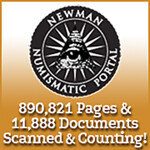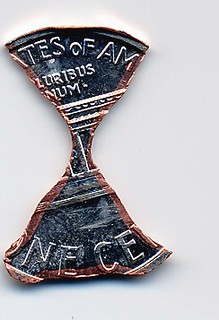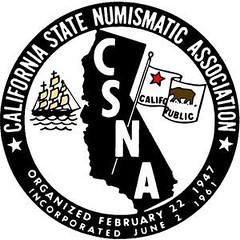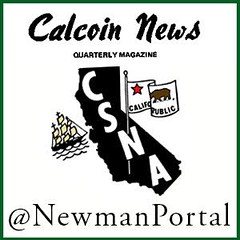
About UsThe Numismatic Bibliomania Society is a non-profit organization devoted to the study and enjoyment of numismatic literature. For more information please see our web site at coinbooks.org SubscriptionsThose wishing to become new E-Sylum subscribers (or wishing to Unsubscribe) can go to the following web page link MembershipThere is a membership application available on the web site Membership Application To join, print the application and return it with your check to the address printed on the application. Print/Digital membership is $40 to addresses in the U.S., and $60 elsewhere. A digital-only membership is available for $25. For those without web access, write to: Terry White, Treasurer
AsylumFor Asylum mailing address changes and other membership questions, contact Terry at this email address: terrywhite5475@yahoo.com SubmissionsTo submit items for publication in The E-Sylum, just Reply to this message, or write to the Editor at this address: whomren@gmail.com BUY THE BOOK BEFORE THE COINSale Calendar |
- WAYNE'S WORDS: THE E-SYLUM MARCH 19, 2017
- NUMISMATICS INTERNATIONAL 93RD AUCTION
- NEW BOOK: DELUXE GUIDE BOOK OF U.S COIN, 3RD ED
- SOME BOOKS ON NEW ZEALAND NUMISMATICS
- PAUL WITHERS REFLECTS ON NUMISMATIC BOOKS
- NEWMAN PORTAL SCANS SHOWERS CATALOG
- NATIONAL GEOGRAPHIC: THE POWER OF MONEY
- NOTES FROM E-SYLUM READERS: MARCH 19, 2017
- MESSAGE: MONEY!
- MORE ON DEATH BY BOOKSHELVES
- NUMISMATIC CONSERVATION: GLUE RESIDUE
- VOCABULARY TERM: BOW TIE
- DAVID CASSEL WISMER (1857-1949)
- VIDEO: THE 1913 LIBERTY HEAD NICKEL
- JEFF BURKE'S TIPS FOR SHARING COINS WITH KIDS
- PRIVATE GOLD COINS OF CALIFORNIA
- OXFORD SOCIETY DISPLAYS AMERICAN COINS
- DR. GORDON SHAW NEW JERSEY COPPER COLLECTION
- SOME INTERESTING MEDALS: MARCH 19, 2017
- RAY CZAHOR'S PHILIPPINE MAIL BID SALE XXI
- NUMISMATIC NUGGETS: MARCH 19, 2017
- TOM KAYS' NUMISMATIC DIARY: MARCH 14, 2017
- HOWARD BERLIN'S NUMISMATIC DIARY MARCH 19, 2017
- TROMPE L’OEIL ART AT THE CRYSTAL BRIDGES MUSEUM
- THE NUMISMATIC MUSEUMS OF BEIJING
- PRIMARY RESEARCH AND THE NETHERLANDS DUCAT
- MARKETING THE NEW ONE POUND COIN
- TOWER MINT STRIKES NEW ISLE OF MAN COIN
- THAMES VICTORIA CROSS MEDAL INVESTIGATIONS
- RESEARCHERS INVESTIGATING WAR GOLD SHIPS
- SPECIAL FIVE POUND NOTES DEMAND EXAMINED
- FEATURED WEB SITE: FLORIDA CURRENCY
Click here to access the complete archive
To comment or submit articles, reply to whomren@gmail.com
Content presented in The E-Sylum is not necessarily researched or independently fact-checked, and views expressed do not necessarily represent those of the Numismatic Bibliomania Society.
WAYNE'S WORDS: THE E-SYLUM MARCH 19, 2017
 We have no new subscribers to report this week; we currently have 2,805 subscribers.
We have no new subscribers to report this week; we currently have 2,805 subscribers.
Thank you for reading The E-Sylum. If you enjoy it, please send me the email addresses of friends you think may enjoy it as well and I'll send them a subscription with your compliments.
Contact me at whomren@gmail.com anytime regarding your subscription, or questions, comments or suggestions about our content.
This week we open with literature in the Numismatics International auction, one new book and several older works.
Other topics this week include the Showers collection of U.S. half cents, the Dr. Gordon Shaw collection of New Jersey coppers, a new National Geographic show on Money, removing glue residue from coins, the 1913 Liberty Nickel, the new one pound coin, and Florida currency.
To learn more about MEGA RED, artist John Haberle, Professor Philip Grierson, author D.C. Wismer, bow ties, Bar Mitzvah medals, the Washington Double Head Cent, the Half Shekel of Tyre, skeleton strips, 1960s French pomposity, arty-farty design, Gallic obfuscation, beer coins, and bibliothanaphobia, read on. Have a great week, everyone!
Wayne Homren
Editor, The E-Sylum
NUMISMATICS INTERNATIONAL 93RD AUCTION
The 93rd NI Bid Sales/Spring Auction (1015 Lots) is now open and available for bids. It will close on April 17, 2017. NI Members and Non-members can view it by clicking on: NI Bid Sale Spring Auction on the Home Page of the NI website http://www.numis.org .
Don't miss your opportunity to participate. So mail your bids to: N.I. Bid Sale, P.O. Box 810521, Dallas, TX 75381-0521.
- 884 BOOK: AN ILLUSTRATED HISTORY OF U.S. COINS BY ABE KOSOFF
- 887 BOOK: THE COINAGE OF CUBA - 1870 TO DATE BY THOMAS LISMORE
- 890 BOOK: CENTRAL AMERICAN COINAGE SINCE 1821 BY HOLLAND WALLACE
- 891 FAO MONEY- FOOD FOR ALL, 1969-1974
- 893 EARLY NUMISMATIC HIGHWAYS AND BYWAYS BY B. MORGENTHAU
- 894 THE COINS OF TINNEVALLY BY E. LOVENTHAL, 1888
- 912 A CHECKLIST OF ISLAMIC COINS BY STEPHEN ALBUM, 2ND EDITION
- 913 TEMPUS IN NUMMIS,VOL.1,DATING IN NUMISMATICS BY SWEENEY & TURFBOER
- 914 TEMPUS IN NUMMIS, VOL. 2, TIME THEMES IN NUMISMATICS BY SWEENEY & TURFBOER
- 916 LAS ACUNACIONES DE LAS CECAS DE LIMA, LA PLATA & POTOSI BY E.A. SELLSCHOP
- 917 LAS MONEDAS OBSIDIONALES HISPANO-AMERICANAS BY JOSE TORIBIO MEDINA
- 925 HANDBOOK OF U.S. TYPE COINS BY R.S. YEOMAN
- 932 NUMISMATIC BIBLIOGRAPHY AND LIBRARIES
- 934 THE COINAGE OF KUTCH BY RICHARD K. BRIGHT
- 946 BILLETES DE COLOMBIA, 1923-1983, BY LEE TEMPRANO
- 947 THE RUSSIAN IMPERIAL ORDERS BY ALAN W. HAZELTON
- 960 FREDERICK EARL FRANKHAUSER, THE PENNY MAN, BY BRYAN G. RYKER 3RD EDITION
- 968 NUMISMATIC HISTORY OF EL SALVADOR IN THE 19TH CENTURY BY J. ROBERTO JOVEL
- 980 THE TUDOR COINAGE BY C.E. CHALLIS
- 986 THE ART AND CRAFT OF COINMAKING BY DENIS R. COOPER
- 988 NUMISMATIC HISTORY OF MEXICO BY A.F. PRADEAU, 1933
- 991 CATALOGO D LAS ONZAS D AMERICA INDEPENDIENTE BY LEOPOLDO LOPEZ-CHAVEZ Y SANCHES
- 1006 ULEX COLLECTION REPRINT OF 1908 AUCTION CATALOG BY ADOLPH HESS
To read the complete auction listing, see:
http://numis.org/wp-content/uploads/2014/03/NI-MAILBID-SPRING-2017.pdf
THE BOOK BAZARRE
NEW BOOK: DELUXE GUIDE BOOK OF U.S COIN, 3RD ED
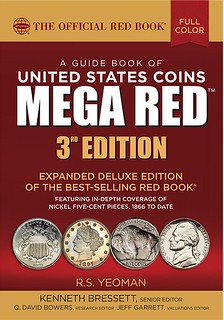 The third edition of MEGA RED (the Deluxe Edition of the Guide Book of United States Coins, also known as the Red Book) will officially debut at the Whitman Coin and Collectibles
Baltimore Expo, March 30–April 2, 2017. MEGA RED retails for $49.95. It can be pre-ordered online (including at Whitman.com) and after the Baltimore Expo will be available from booksellers and hobby
shops nationwide.
The third edition of MEGA RED (the Deluxe Edition of the Guide Book of United States Coins, also known as the Red Book) will officially debut at the Whitman Coin and Collectibles
Baltimore Expo, March 30–April 2, 2017. MEGA RED retails for $49.95. It can be pre-ordered online (including at Whitman.com) and after the Baltimore Expo will be available from booksellers and hobby
shops nationwide.
Every U.S. coinage series has been updated and revised in the third edition, and new sections have been added. The 1,504-page book includes an in-depth 314-page feature on America’s nickel five-cent coins (Shield nickels, Liberty Head nickels, Buffalo nickels, and Jefferson nickels), written by Q. David Bowers and covering 545 varieties dating from 1866 to today. New appendices explore So-Called Dollars, special modern gold coins, hobo nickels, chopmarked coins, U.S. Mint medals, love tokens, and nickel-operated machines.
Billed as the “biggest, most useful Red Book ever,” MEGA RED measures 7 x 10 inches and has 1,040 more pages than the regular edition. The larger size and increased page count combined make MEGA RED five times bigger than the regular-edition Red Book. It prices 8,200 items in up to 13 grades each, with 48,000 individual values and 15,400 auction records covering circulated, Mint State, and Proof coinage. The book is illustrated with 7,000 images, including 2,434 that are new to this edition.
MEGA RED covers American coinage from New England colonial times to the modern day—half cents through $20 gold double eagles, plus bullion, commemoratives, Proof and Mint sets, significant tokens and medals, error coins, and other numismatic collectibles. It follows the basic structure of the regular-edition Red Book, but each chapter is dramatically expanded with more historical information, more die varieties, detailed grading instructions with enlarged full-color illustrations, specialized advice on strike characteristics and other technical details, market analysis, and valuable guidance on collecting and investing in rare coins.
The book’s Senior Editor is Kenneth Bressett, Valuations Editor is Jeff Garrett, and Research Editor is Q. David Bowers. A 57-page introduction, “The Story of American Money,” is based on the work of the late Dr. Richard Doty, senior curator of the National Numismatic Collection at the Smithsonian.
Each year’s new MEGA RED features an in-depth focus on one or more coin series. The first edition included a 364-page section on copper half cents and large cents, with images, history, diagnostics, and pricing for 832 die varieties, 1793–1857. The second edition featured 330 pages covering 607 varieties of Flying Eagle, Indian Head, and Lincoln cents, 1856 to date.
For federal coins, detailed charts show each mintage; a summary of certified population data; average national retail prices in grades ranging from About Good to high Mint State and Proof; and three or more recent auction records for most coins. Enlarged close-ups of die varieties provide visual guidance. Extensive chart notes give the back stories and additional details on significant coins.
Regularly updated appendices include illustrated essays on misstrikes and error coins; rare and collectible numismatic books; bullion values of common-date silver and gold coins; the top 250 coin prices realized at auction; and grading standards for U.S. coins.
The book’s special-feature appendices include fresh material with each new edition. Past editions have explored coin cleaning, preservation, and conservation; counterfeit coins in today’s marketplace; the dynamics of the rare-coin market; techniques of smart bidding at auction; Scouting and numismatics; American Arts gold medallions; investing in modern gold and silver bullion; building a registry set; determining coin prices and values; predicting the rare-coin market; coin clubs; how to get a new die variety listed in the Red Book; and collecting numismatic literature.
After the Baltimore Expo, MEGA RED will be available from booksellers and hobby shops nationwide, and online (including at www.Whitman.com). Whitman Publishing is the Official Supplier of the ANA, and Association members receive a 10% discount off all purchases.
MEGA RED: A Guide Book of United States Coins, Deluxe Edition, 3rd edition
ISBN 0794845096
1,054 pages, full color
By R.S. Yeoman; senior editor Kenneth Bressett; research editor Q. David Bowers; valuations editor Jeff Garrett
$49.95 retail
SOME BOOKS ON NEW ZEALAND NUMISMATICS
Yosef Sa'ar of Elat on the Red Sea writes:
I didn't find these books mentioned in the E-Sylum archives, but maybe readers know more. They are cited in the current auction catalogue of Noble Numismatics, Sydney, Australia:
Anthony W. Grant, "Premier: the New Zealand Coin and Banknote Catalogue". 2011.
Terry M Roker, "New Zealand Checks, Discount & Special Purpose Tokens". USA, 2015
The Premier Catalogue is an annual (a bit like the Red Book) and has been rebranded as the John Bertrand (TM) New Zealand Coin & Banknote Catalogue for the past few years. The author is still Tony Grant and it's published by Philatelic Distributors Limited. The 2017 edition (ISBN 978-0-9941337-1-7) is out now, and I have copies for sale if anyone's interested.
Terry Roker's books are self-published and are a complement to other books covering aspects of NZ exonumia, such as the above (the Bertrand book has a priced listing of most currently known checks and tokens, while Roker's book illustrates all he's been able to find, with some background history on makers, locations, etc.), as well as the Morel and MacMaster & Purdy books on NZ commemorative medals and challenge coins - I just had to get that last little plug in, too!
Terry lives in Wyoming so access to his publications for US members should be relatively straightforward. His e-mail address is aoraki@bresnan.net
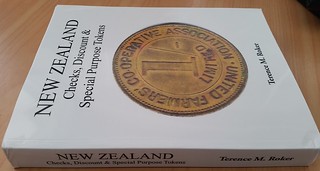
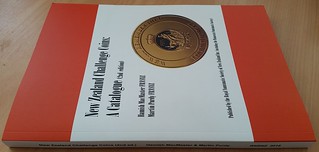
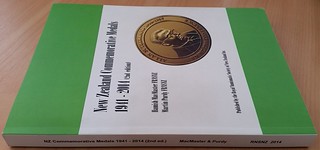
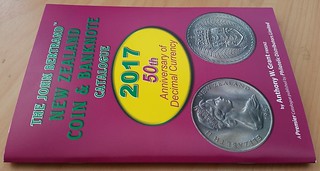
Martin adds:
I've taken them side-on to give an idea of overall size. The Roker book is US letter format, about 550 pages; the Bertrand catalogue is A5, 88 pages; and the MacMaster/Purdy books are A4, around 300 pages each.
I can supply the last three (postage isn't much for the Bertand book since it's quite slim, but it will be fairly hefty for the others); orders for the Roker book would need to go to Terry directly.
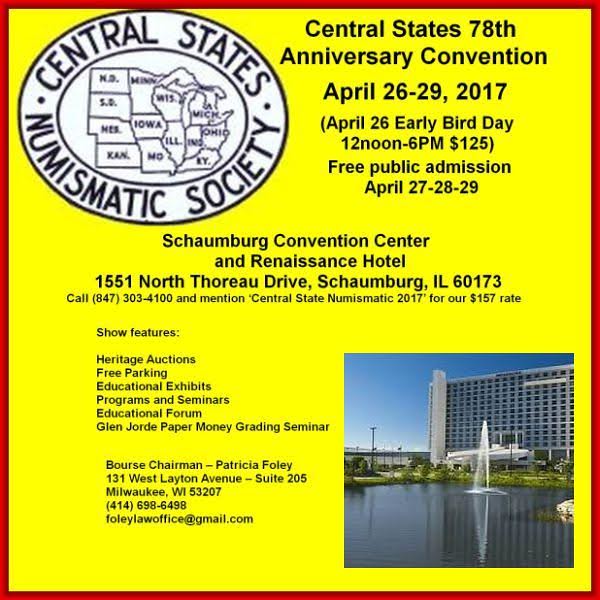
PAUL WITHERS REFLECTS ON NUMISMATIC BOOKS
COLLECTIONS and COLLECTORS and some reflections on numismatic books, their content, design and usefulness.
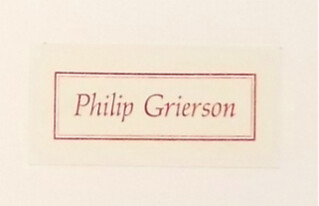 Around four or five years ago we bought a large accumulation of books. They were largely the duplicates from the personal library of Philip Grierson, which he willed to the Fitzwilliam
Museum, Cambridge, on his death, along with his marvellous collection of European medieval coins.
Around four or five years ago we bought a large accumulation of books. They were largely the duplicates from the personal library of Philip Grierson, which he willed to the Fitzwilliam
Museum, Cambridge, on his death, along with his marvellous collection of European medieval coins.
In Cambridge, Professor Philip Grierson was a remarkable man in a city of remarkable men. I first met him one summer day on a visit to the Fitzwilliam Museum, when the late Mark Blackburn, another eminent scholar, was Curator of Coins and Medals. At the time Grierson was about to celebrate his 90th birthday. Dr Martin Allen, who was looking after us that day, told us that the great man was coming in and arranged us so that our piles of books and trays of coins we were photographing did not conflict with Grierson's important work of checking one of the volumes of Medieval European Coins.
We were a little in awe of the person who was about to come in, we knew that he had simultaneously held three important academic posts in no fewer than three countries. In addition to the chair of Numismatics in Cambridge, he had been professor of numismatics at Brussels university, in Belgium. The third country was the USA, where in 1953, Grierson was one of the founding instructors at the American Numismatic Society's annual summer school. He returned the following year, and in 1955 was invited to become honorary adviser and curator at the Dumbarton Oaks Research Library and Collection in Washington DC, managed by the trustees of Harvard University. His task there was to use the centre's resources to build the world's finest collection of Byzantine coinage, and publish it, which he did. Therefore, at the height of his productivity, Grierson spent the Michaelmas, Lent and Easter terms each year in Cambridge, Christmas and Easter in Brussels and eight or nine weeks of the summer in Washington.
In addition to the above, he had carried out the normal college and Cambridge university functions that his job demanded, and he was also a syndic of both the University Library and the Fitzwilliam Museum, and chairman of the library management board. As well as these, from 1945 to 1955, he was literary director of the Royal Historical Society*. From 1961-5 he was president of the Royal Numismatic Society, and Ford's Lecturer in Oxford from 1956-57. He was made a fellow of the Society of Antiquaries in 1949, when I was still wearing short trousers and did not know what an antiquary was; let alone a fellow of the British Academy, to which honour he was elected in 1958. An important guy indeed !
As well as his distinguished reputation, my wife and I knew that he was old, so I guess that I was expecting a sedate academic wearing a business suit. We were certainly not prepared for someone who turned up sweaty and wearing khaki knee-length shorts because he'd arrived on a racing bicycle. Otherwise, he was quiet and self-effacing. We were even more impressed because he was not in the least bit old, stuffy or pompous.
Initially arriving in Cambridge to study medicine shortly after the end of WW1, he was to later to produce an unrivalled flow of scholarship, though he soon changed his field of study from medicine to history. His earliest research was on ecclesiastical history and he won the Lightfoot prize in theology !
It was the chance find of a Byzantine bronze coin in one of his father's desk drawers in 1944 that inspired Grierson to visit Spink's in London, where he bought £5 worth of coins for students to handle in his lectures and tutorials
Reportedly, by the end of 1945 he had 1,500 coins, and a year later 3,500. Eventually his collection had more than 20,000 and is perhaps the finest representative collection of medieval European coins in the world. Although, for security reasons, the collection was kept in the Fitzwilliam Museum for many years, ownership only passed to the museum on his death, it being retained as his own property, so as to enable him to sell pieces as and when he saw an improved specimen. His books too, were his property, and bear a neat name label.
He had started collecting coins at a time when London numismatic dealers were awash with material which had come from the sales of the enormous collection of Lord Grantley. Post-war conditions meant that these coins were available at a fraction of their pre-war price.
Not a wealthy man, Grierson was a careful, selective buyer, though in later years, he could spend substantial amounts when it was necessary. He also bought significant material from continental dealers at a time when most Europeans, including the British, were subject to rationing, and more concerned with buying food than coins.
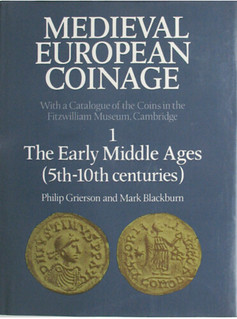 In 1982, Grierson arranged funding to publish his now substantial and significant collection. Medieval European Coinage was initially envisaged as a twelve-volume definitive
catalogue and text on the coinage of Europe. The first volume, which appeared in 1986, discusses the coinage of all western Europe up to the tenth century. It remains the standard catalogue and study
of this difficult to understand period. The number of volumes has also increased !
In 1982, Grierson arranged funding to publish his now substantial and significant collection. Medieval European Coinage was initially envisaged as a twelve-volume definitive
catalogue and text on the coinage of Europe. The first volume, which appeared in 1986, discusses the coinage of all western Europe up to the tenth century. It remains the standard catalogue and study
of this difficult to understand period. The number of volumes has also increased !
His work and studies were eclectic to say the least, involving not just wide and detailed historical knowledge of ancient and medieval numismatics, but covered other diverse skills and branches of knowledge such as mathematics, statistics, metallurgical analysis, economics in an impressively wide range of languages. His library reflected all of these. Now I have to stress that we did not buy his library, only its duplicates, but apart from really rare and precious things, Grierson had kept duplicate copies in his rooms, for those moments when the museum was closed, so what we have is not just the dross.
Having bought thousands of books over the years, I have at various times have had to change my opinion as to what is dross. Some that I had initially thought of discarding have entered our own library and now have a place of honour on the shelves.
One such book is Birmingham and the Midland Hardware District : A series of Reports edited by Samuel Timmins. This I bought 30 years ago, as part of an auction lot. It is a 1967 reprint of the 1866 original, and there are now POD reprints available from several sources. However, when I bought it, I almost slung it away, until I read just a few of its pages and I was hooked. Over the years I have consulted it again and again and used its information when writing our books on 18th and 19th century tokens. It is a marvellous store of information.
I have no doubt that there are such treasures in this lot too, some are obvious, whilst others are sleepers. Although they are not all immediately available, one by one, the contents of the forty-odd boxes of books will be catalogued and be offered for sale on our website for your delectation.
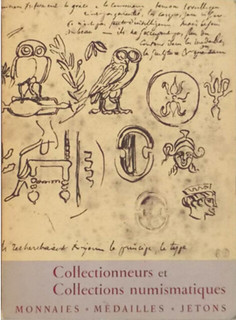 One good book that is for sale almost immediately, as it came out of the first box that we opened is Collectioneurs et Collections Numismatiques : Monnaies, Medailles et Jetons. This
is a Catalogue for an Exhibition/Competition organised by the Département des monnaies, médailles et antiques of the Bibliothèque nationale, Paris, jointly with the Société française de numismatique,
and the French Mint, and its museum. It was held at the Musée de la monnaie, Paris, May - September, 1968. This large paperback, xxx + 361 pages, 180 x 238mm, which is well illustrated throughout by
numerous plates and in-text illustrations presents to the reader many of the pieces in the exhibition.
One good book that is for sale almost immediately, as it came out of the first box that we opened is Collectioneurs et Collections Numismatiques : Monnaies, Medailles et Jetons. This
is a Catalogue for an Exhibition/Competition organised by the Département des monnaies, médailles et antiques of the Bibliothèque nationale, Paris, jointly with the Société française de numismatique,
and the French Mint, and its museum. It was held at the Musée de la monnaie, Paris, May - September, 1968. This large paperback, xxx + 361 pages, 180 x 238mm, which is well illustrated throughout by
numerous plates and in-text illustrations presents to the reader many of the pieces in the exhibition.
It is not just a large book, but also a wonderful example of 1960s French pomposity meeting arty-farty design and Gallic obfuscation. For example, the four-page long list of contents, that length due to the overly large 'artistic' typeface employed, is cunningly hidden at the rear of the book where the listing of officials and self-important political functionaries ought to be, if at all !
Nowhere to be found among all the preliminary crap is the really important bit - the name of the person who had the task of editor ! Now this is a shame. Why ? Well, for a start, the name deserves
a little fame, if only (perhaps?) posthumously, for without the name of 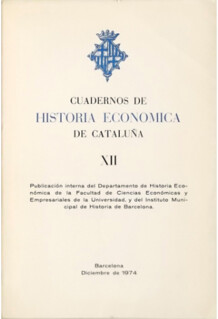 the editor, it does not appear on several internet websites as those sites require the name of an editor before an entry can be found ! This is a monumental error as it is a book that is
worthy of further notice ! Alas, even though it is from Grierson's library, it does not have his name sticker in it, but even so it should be in someone's library, perhaps it could become
yours, to bear your ex-libris ?
the editor, it does not appear on several internet websites as those sites require the name of an editor before an entry can be found ! This is a monumental error as it is a book that is
worthy of further notice ! Alas, even though it is from Grierson's library, it does not have his name sticker in it, but even so it should be in someone's library, perhaps it could become
yours, to bear your ex-libris ?
Books that do have his name sticker are several volumes in the series Cuadernos de Historia Economica de Cataluña. Now, with a title like that and coming into the category of Periodicals it is unlikely to attract much attention, and will probably languish until a Spanish-speaking bibliophile, with a penchant for historical economics, realises their true worth and gets as much delight from their pages as Prof. Grierson did.
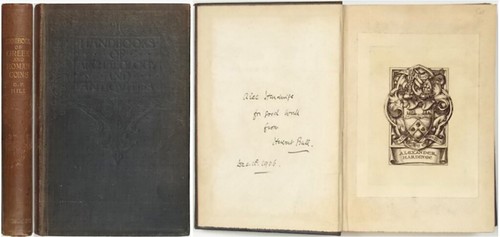
Another book from his library that does not bear his name tag is G F Hill’s Handbook of Greek and Roman Coins, perhaps because it already has an impressive bookplate and an inscription that indicates that it was given as a prize. I wish that I could say that I immediately knew who its previous owner was. However, a little research revealed that Alexander Hardinge was quite a celebrity in his day, having been personal private secretary to Edward VIII at the time of his abdication in 1936, and afterwards, for a short while, continued as PPS to his brother, who became George VI.
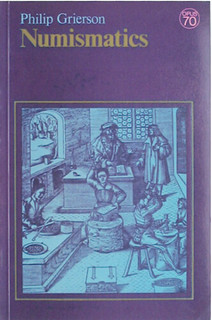 Not from his library at all, is his own book Numismatics. This 220 page paperback is one that he wrote to provide his university students who were newcomers to the subject of
numismatics. Whilst an entry-level book, it is certainly not for dummies; it looks at what he considered to be the essentials, including the division between east and west, and describes most of the
types of object that are found in excavations that are neither coins, nor money, and therefore confuse people. It is certainly one book which everyone should read, especially chapter 9, on the
subject of numismatic scholarship.
Not from his library at all, is his own book Numismatics. This 220 page paperback is one that he wrote to provide his university students who were newcomers to the subject of
numismatics. Whilst an entry-level book, it is certainly not for dummies; it looks at what he considered to be the essentials, including the division between east and west, and describes most of the
types of object that are found in excavations that are neither coins, nor money, and therefore confuse people. It is certainly one book which everyone should read, especially chapter 9, on the
subject of numismatic scholarship.
If, out of curiosity, you do visit our website and want to see what what delights are available, enter the word Grierson into the FIND box and look at what comes up. Even with all of the other things that we do, such as writing and editing our own publications, we hope to get between 10 and 30 new items from the Grierson library listed each week.
* For those who do not know about the Royal Historical Society, should note the name, for publications associated with it are uniformly excellent, and whatever their subject are a good read, though sadly, they are not plentiful.
One such that sits on my shelves is Handbook of British Chronology, edited by F M Powicke, which should sit on everyone's shelves. My own copy of this was bought 30 years ago from a secondhand book shop. It was priced at £1, and I got a generous discount. Why did I get a good discount ? Perhaps because its top is dusty, its cover heavily sunned and it is damp damaged, but after all these years, I would not part with it, because I have grown used to its little foibles such as its bowed front cover. Why do I like it so much ? Perhaps because I love books and its 440 pages contain such valuable chapters as Saints' Days and Festivals used in Dating, Regnal Years, Provincial and National Councils of the Church in England to 1536, an Alphabetical list of Dukes, Marquesses, and Earls 1066-1603. Rulers of England from 1066, Rulers of the Isle of Man, English Officers of State. A List of Chief Governors of Ireland 1172-1939. A list of Bishops of England, Wales, etc., and more. It has become an old friend, and I know that I can trust it !
To visit the Galata Coins web site, see:
http://www.galata.co.uk/

NEWMAN PORTAL SCANS SHOWERS CATALOG
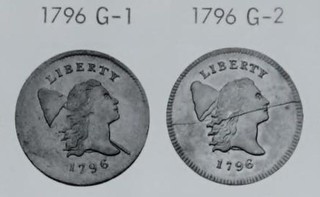 The Philip M. Showers Collection of United States Half Cents (Stack’s, 1969) is one of the most prized items of modern United States numismatic literature. Placed privately en bloc by
Stack’s in 1969 with Willis H. duPont, the collection represented nearly every half cent variety, mostly in uncirculated or proof condition. R. Tettenhorst, well-known Missouri collector, acquired
the Showers/duPont half cents in 1976, and many of these reappeared in the Goldberg sale of the Missouri Collection, January 2014. Tettenhorst’s purchase is described in Penny-Wise, January 2006, in
which he recalled how Ben Stack confidentially related duPont’s identity:
The Philip M. Showers Collection of United States Half Cents (Stack’s, 1969) is one of the most prized items of modern United States numismatic literature. Placed privately en bloc by
Stack’s in 1969 with Willis H. duPont, the collection represented nearly every half cent variety, mostly in uncirculated or proof condition. R. Tettenhorst, well-known Missouri collector, acquired
the Showers/duPont half cents in 1976, and many of these reappeared in the Goldberg sale of the Missouri Collection, January 2014. Tettenhorst’s purchase is described in Penny-Wise, January 2006, in
which he recalled how Ben Stack confidentially related duPont’s identity:
“I can’t tell you his name, but I can tell you his last initial and the state he lives in.’’ And I said, “I don’t know how that could help me, but go ahead.’’ Ben said, “His last name begins with D and he lives in Delaware.’’ I thought that it was quite a cachet that the gentleman’s initial and state of residence would be enough to identify him.
The Stack’s record of this collection is technically neither a fixed price list nor an auction sale catalog. It is best described as a group of photographic plates, accompanied by brief descriptions, of the Showers half cents. Twelve copies were produced. Later, c. 2005, Stack’s produced a reprint with good quality halftones that was sold at $75.
The Hamelberg copy, one of the originals, was the first document scanned at the Newman Portal with recently upgraded cameras, now at 36 megapixel resolution. While there is no substitute for a photograph and a magnifying glass in hand, these images can be digitally expanded with sufficient quality to allow plate matching in most cases. The Newman Portal acknowledges Dan Hamelberg for loaning this copy and Stack’s Bowers for granting permission to scan their publications.
Link to Showers catalog on NNP:
https://nnp.wustl.edu/library/book/528156
Link to January 2006 Penny-Wise on NNP:
https://nnp.wustl.edu/library/book/514545?page=10
NATIONAL GEOGRAPHIC: THE POWER OF MONEY
Ed Krivoniak of Pittsburgh writes:
There is a new program coming on the National Geographic channel this Monday, March 20, 2017 at 9 P.M. It is called "The Power of Money" and is part of their series "Origins: The Journey of Mankind". The first two episodes will be repeated in the two hours prior to this show and this show itself will be repeated on the 20th at 11 P.M. and again on the 24th of March at the same two times. They will probably get into where and why the concept of money was first developed.
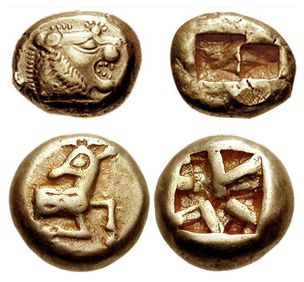 About 9,500 years ago in the Mesopotamian region of Sumer, ancient accountants kept track of farmers’ crops and livestock by stacking small pieces of baked clay, almost like the tokens used
in board games today. One piece might signify a bushel of grain, while another with a different shape might represent a farm animal or a jar of olive oil.
About 9,500 years ago in the Mesopotamian region of Sumer, ancient accountants kept track of farmers’ crops and livestock by stacking small pieces of baked clay, almost like the tokens used
in board games today. One piece might signify a bushel of grain, while another with a different shape might represent a farm animal or a jar of olive oil.
Those humble little ceramic shapes might not seem have much in common with today’s $100 bill, whose high-tech anti-counterfeiting features include a special security thread designed to turn pink when illuminated by ultraviolet light, let alone with credit-card swipes and online transactions that for many Americans are rapidly taking the place of cash. But the roots of those modern modes of payment, may lie in the Sumerians’ tokens. Such early accounting tools ultimately evolved into a system of finance and money itself —a symbolic representation of value, which can be transferred from one person to another as a payment for goods or services.
Civilization existed before money, but probably wouldn’t have gotten very far without it. Ancient humans’ invention of money was a revolutionary milestone. It helped to drive the development of civilization, by making it easier not just to buy and sell goods, but to pay workers in an increasing number of specialized trades—craftsmen, artists, merchants, and soldiers, to name a few. It also helped connect the world, by enabling traders to roam across continents and oceans to buy and sell goods, and investors to amass wealth.
Over the centuries, money continued to evolve in form and function. The ancient world’s stones and shells gave way to coins, and eventually to paper currency and checks drawn upon bank accounts. Those physical tokens, in turn, gradually are being superseded by electronic ones, ranging from credit card transactions to new forms of digital currency designed for transferring and amassing wealth on the Internet.
What is it that truly separates humans from animals? Is it the opposable thumb and the ability to use tools? Is it language? Farming? There are arguments to be made for and against each candidate criteria; there are many examples of animals who use primitive tools and language, for example. And humankind farmed for millenia without further significant advances in civilization. When did modern life as we know it "take off"? When people began trading. It was trade that built civilization - those simple exchanges of goods and services that benefit both parties. Trade leads to specialization, and specialization leads to vast improvements in quality and efficiency. And money is what turbocharges trade. The concept of a common medium of exchange simplifies everything. Shoe sellers don't need a "Will trade shoes for food" sign - they sell their goods to people who need shoes, and in turn use the money to pay for the food their families need. Everyone benefits.
Check out the series, and let us know what you think. -Editor
To read the complete article, see:
HOW MONEY MADE US MODERN
(http://channel.nationalgeographic.com/origins-the-journey-of-humankind/articles/how-money-made-us-modern/)
For more information on the series, see:
POWER OF MONEY
(channel.nationalgeographic.com/origins-the-journey-of-humankind/episodes/power-of-money/)
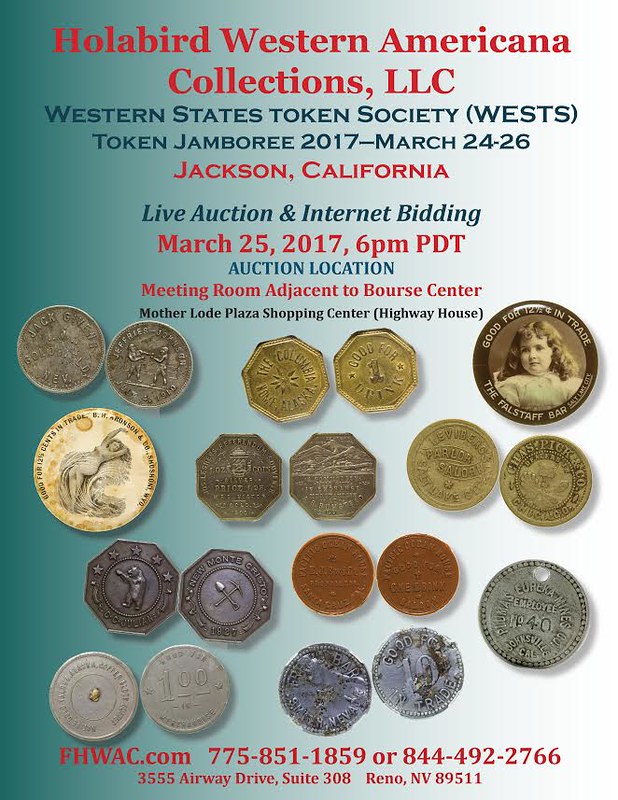
NOTES FROM E-SYLUM READERS: MARCH 19, 2017
Don't Skip an Issue!
Dennis Tucker of Whitman Publishing writes:
My Tiny Boss-Lady™ woke up early this morning clamoring for a bottle of milk, after which I sat down to go through a backlog of old emails. You know how you sometimes skim an email and leave it marked “Unread” or otherwise flag it, to go back to later for a more in-depth reading? I had a couple issues of The E-Sylum from December that I finally circled back to this morning. Normally I read every weekly issue from top to bottom within a day or so of receiving it (often when it first arrives), but the holiday season always brings extra competition for time and attention. My advice to fellow E-Sylumophiles is this: If you’ve set an issue aside to go back to later—definitely get back to it! You’re guaranteed to find something (or many things) of interest: entertaining stories, valuable news, updates on ongoing research, new book announcements, and more.
To read the earlier E-Sylum issues, see:
The E-Sylum eNewsletter Archive (www.coinbooks.org/club_nbs_esylum.html)
Calling Jim Powell
Oded Paz writes:
I’m trying to reach Jim Powell. He sent me a letter, and I must contact him about his order. He added a printout from The E-Sylum, so I assume he gets it via email.
John Ford's Storytelling
Expanding on his comments last week about a piece from the Clifford collection also pedigreed to John J. Ford, Ted Buttrey writes:
On the piece about which you inquired, the very fact that it is provided with a false provenance is evidence sufficient to hold that the piece itself is one of Ford's inventions. Not only did Ford manufacture many fakes, most excitingly in gold -- the pretended Mexico ingots of the 1740's, and the raft of fake Western American ingots -- he was also a great story-teller, writing fictitious histories about his fakes to impress his unknowing customers, like Clifford. John Kleeberg and I revealed much of what Ford had been up to in our earlier website, How the West was Faked.
To read the earlier E-Sylum articles, see:
SELECTIONS FROM THE MARCH 2017 KAGIN'S SALE (www.coinbooks.org/v20/esylum_v20n11a16.html)
FALSE WESTERN BARS SITE CREATED (www.coinbooks.org/esylum_v07n16a13.html)
Quiz: Who Is The Numismatist Who Painted This Landscape?
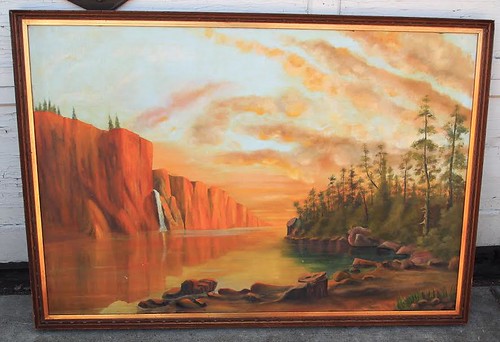
Pete Smith writes:
This falls under the category of numismatic authors who aspire to be painters. What numismatic author painted the attached image? Can you name any other numismatic authors who were painters?
Dating Systems in Action in the Past
Gary Dunaier writes:
I'm interested in early dated coins - Robert Levinson's "The Early Dated Coins of Europe 1234-1500" is a particular favorite in my numismatic library - so I find the present discussion on Arabic numerals fascinating. (I would be interested in an "early dated coinage" book concentrating on coins with Arabic numerals. Levinson's book, fascinating as it is, by its nature includes coins using Roman numerals, but from an aesthetic standpoint I prefer "1486" over "MCCCCLXXXVI." But I digress.)
Am I correct to infer from John Lupia's comment...
"Dionysius Exiguus, a monk, circa 525/7 calculated the birth of Christ to A.U.C. 753 on the Roman calendar. Many credit the use of Exiguus’ calculations to the Venerable Bede, an English historian writing in the late 7th and early 8th centuries. Consequently, it is from the 8th century on we begin to find the Exiguus system used. This is where, in the West, we receive the date today since it was adopted in the Gregorian calendar in 1582."
... that, for example, people living in the 600s did not know they were living in that time, and that it wasn't until the 700s that people knew they were living in the 700s (in the sense that we know we're living in the 2000s)?
John Lupia writes:
The only thing I would add is that in the past generally, societies would reckon time in regnal years. For example, the third year of King so and so.
To read the earlier E-Sylum article, see:
NOTES FROM E-SYLUM READERS: MARCH 12, 2017 : More On Arabic Numerals and Dates (www.coinbooks.org/v20/esylum_v20n11a06.html)

MESSAGE: MONEY!
Bruce Smith writes:
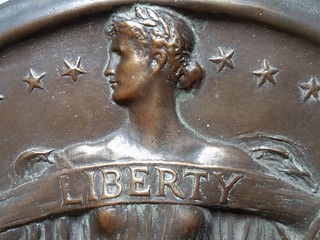 Regarding the Liberty Trust Company (Cumberland, MD) plaque which resembles the standing liberty design, I checked some bank directories in my library. This bank is not listed in the 1919
Rand McNally Bank Directory, but is listed in the 1927 edition. Its date of organization is 1920. So the plaque was made after the standing liberty quarters had been in circulation for a few
years.
Regarding the Liberty Trust Company (Cumberland, MD) plaque which resembles the standing liberty design, I checked some bank directories in my library. This bank is not listed in the 1919
Rand McNally Bank Directory, but is listed in the 1927 edition. Its date of organization is 1920. So the plaque was made after the standing liberty quarters had been in circulation for a few
years.
Greg Adams writes:
a) The plaque is dated 1917 on the bottom below Ms liberty’s foot…
b) The design on the Right pillar is very reminiscent of the fasces on the back of the Liberty head (mercury) Dime (1916?)
c) The globe to the left of Ms liberty reminds me of both the Columbia Half (1892-3) and the 1923 Monroe half (though a bit of a stretch)
Pete Smith writes:
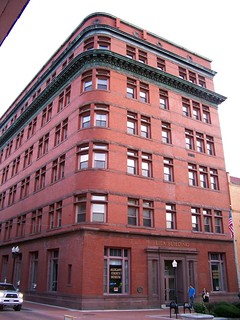 The last two issues have had a discussion about a bronze plaque removed from the Liberty Trust Company of Maryland Building in Cumberland, Maryland. The most recent discussion was about the
date the plaque was placed on the building.
The last two issues have had a discussion about a bronze plaque removed from the Liberty Trust Company of Maryland Building in Cumberland, Maryland. The most recent discussion was about the
date the plaque was placed on the building.
The building is currently known as the Lila Building at 81 Baltimore Street in Cumberland, Maryland. It was built during 1901 and 1902. The Liberty Trust Company of Maryland was organized on February 20, 1920, so it was not an original tenant of the building.
A photograph of the building shows a round plaque to the left of the entry doors. I did not find any record of when the medallion was placed on the building. With the word "Liberty" on the plaque, it may have been added some time after the bank occupied the building.
In my opinion, the plaque was not modeled after the Standing Liberty Quarter. Both represent Art Deco themes arranged to fit in a round format. I believe both represent the era but one cannot be shown to be the model for the other.
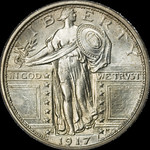
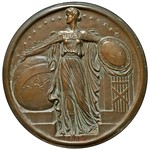
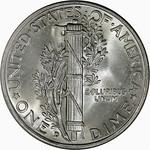
Dennis Tucker writes:
Something more to note about the design of the Liberty Trust Company plaque: It features design elements of not only the Standing Liberty quarter, but also of the Winged Liberty (“Mercury”) dime that debuted the same year (1916). The fasces (partially covered, in the plaque’s case, by Miss Liberty’s shield) was new to U.S. coinage when it was introduced on the dime. But with tens of millions of the coins minted before the end of 1917 (more than one for every man, woman, and child in the nation), it wouldn’t have taken long to enter the popular consciousness as representing “money.”
I think the Liberty Trust Company plaque was simply a commercial artist’s amalgam of design elements pulled from America’s workhorse coins, the dime and quarter, which would have spoken to the man on the street. Message: Money! It wouldn’t take an Adolph Weinman (designer of the dime) or a Hermon MacNeil (designer of the quarter) to meld these features together into a serviceable emblem for a bank client.
Pat McBride writes:
It would be great to find some sketches that are attributable to MacNeil or Weinman. Until then, it seems that Dennis' thoughts are the more likely. The plus side is that the commercial artists at that time were very skilled and the bar was set pretty high with the new coin designs from that era. I don't know that we will ever see that run of artistic creativity again.
Those past coin designs remind me of the gingerbread Victorian house popularity at the turn of the last century. Some of today's designs remind me of the post WWII brick ranch houses that were very popular in the 50's and 60's. I am noticing a slight movement away from designs of simplistic functionality back toward the more classic look. The critics are very harsh today.
To read the earlier E-Sylum article, see:
NOTES FROM E-SYLUM READERS: MARCH 12, 2017 : More on the Liberty Trust Company of Maryland Plaque
(www.coinbooks.org/v20/esylum_v20n11a06.html)
THE BOOK BAZARRE
MORE ON DEATH BY BOOKSHELVES
Last week Ron Thompson wrote:
There should be a term for the fear of dying under your own bookcase and books. Perhaps your readers can come up with one.
Martin Purdy writes:
I first thought of "bibliothanatophobia" for this (book-death-fear) but a friend more versed in Ancient Greek than I am suggested that "phonos" is a better word for the "death" part, with more sinister overtones, so that would give us either "bibliophonophobia" or "bibliothekephonophobia" if you want to go the whole hog and call it "fear of death by bookshelf"!
Harry Cabluck writes:
Perhaps the term might be "Libros-Biblios-Thana-Phobios" Or, "Bibliothanaphobia"
To read the earlier E-Sylum article, see:
MORE ON THE THREAT OF COLLAPSING BOOKSHELVES (www.coinbooks.org/v20/esylum_v20n11a07.html)
NUMISMATIC CONSERVATION: GLUE RESIDUE
The ill effects of glue residue can range from yellow toning to environmental damage.
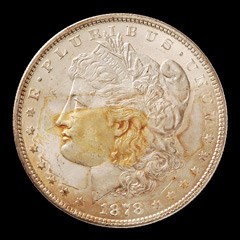
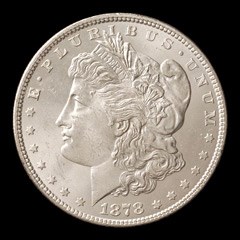
1878-S Morgan dollar
Yellowed glue residue removed
Residues are not only unattractive but, more importantly, can create permanent surface changes that will damage the coins we value. While many residues do not have specific causes some do. Glue residue can actively change the surface chemistry of a coin and, if not removed, leave it ineligible for NGC grading.
Glue residue is often a raised substance on the surface of a coin and usually on one side in a specific location. The substance is typically a different texture than the coin's original metal surface. With time, glue residue will yellow leaving an unappealing visual indication. Many times, though not always, glue residue will be sticky to the touch and attract further dirt and lint from the immediate environment.
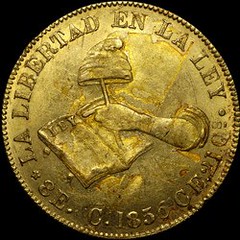
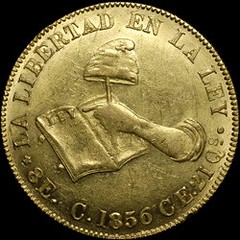
1856C Mexico 8 Escudo Gold
Glue residue in the shape of transparent tape removed
A coin can acquire glue residue from a myriad of scenarios. These may include mounting in a holder or frame with a hardened liquid adhesive or held in place with a strip of transparent tape. Coins may have been secured by various adhesive substances for display or storage when it was used in daily commerce and long before it had any additional numismatic value.
When glue residue is present, professional removal is recommended. Removing glue residue can come with some concerns. Most of the time glue residue can be removed from the surface leaving a clean, relatively damage free surface. Many times, however, the glue substance can affect the surface. The result may range from a pattern in the toning to irreversible environmental damage in a clear shape where the glue was. When the visual difference is a case of toning, steps can usually be taken by the NCS conservators to minimize the impact. Permanent environmental damage, however, cannot be easily minimized.
Glue residue can sometimes be mistaken for a mint error. This is especially true if the glue residue has the impression of another coin in it appearing as a sought after multiple strike mint error. The glue containing the secondary image will be yellowed and will be at least somewhat transparent to see the true surface of the coin. This thick type of glue will often contain air bubbles that even when tiny are observable. The secondary image will also have the visual texture difference even if it's a shiner matte appearance compared to the tie surface of the coin. Glue removal will be recommended in cases where it is masquerading as a mint error.
To read the complete article, see:
NCS Conservation: Glue Residue (www.ngccoin.com/news/article/5833/NCS-conservation-glue-residue/)
To read the earlier E-Sylum article, see:
NGC NUMISMATIC CONSERVATION SERVICES (www.coinbooks.org/esylum_v19n52a16.html)

VOCABULARY TERM: BOW TIE
Named after its obvious shape, this mint error is struck between dies on a scrap not intended. Note the mis-sharpened areas of the circle cause by striking. Photo Fred Weinberg.
Bow Tie. A mint error struck on a piece of salvage of the rolled strip formed in the area between where two blanks were removed. The piece of SCISSEL is shaped like a bow tie, hence the name. While this kind of scrap can appear on strips where single blanking has occurred it is more prevenient when DUAL BLANKING has cut two nearby blanks from the strip. Normally this area is retained on the SKELETON STRIP. However it this does not occur it should have been eliminated from satisfactory blanks in the RIDDLING drum where it should drop out and ultimately be melted for reuse of the metal. Mint error collectors like this error because of its unusual shape. See DUAL BLANKING.
DAVID CASSEL WISMER (1857-1949)
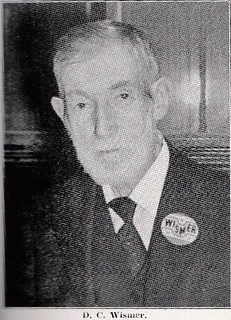 David Cassel Wismer (1857-1949), was a second generation American, born at Hilltown, Bucks County, Pennsylvania, on March 25, 1857, son of Christian Wismer, Jr. (1817-1902), and Mary Cassel
Wismer (1814-1903). His great-grandfather Jacob Wiesner Wismer (1684-1787) was born in Germany, came to America with his wife and son Christian Wismer (1771-1852), and died in 1787 at the age of 103
years at Deep Run [Bedminster Township], Bucks County, Pennsylvania.
David Cassel Wismer (1857-1949), was a second generation American, born at Hilltown, Bucks County, Pennsylvania, on March 25, 1857, son of Christian Wismer, Jr. (1817-1902), and Mary Cassel
Wismer (1814-1903). His great-grandfather Jacob Wiesner Wismer (1684-1787) was born in Germany, came to America with his wife and son Christian Wismer (1771-1852), and died in 1787 at the age of 103
years at Deep Run [Bedminster Township], Bucks County, Pennsylvania.
D. C. Wismer was known as the "Dean of American Numismatists".
He applied for membership in the ANA in November 1892, and was ANA Member No. 127 in December 1892.
Ben G Green auctioned some of the D. C. Wismer collection in his 7th mail auction on October 24, 1903.
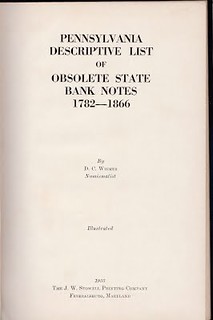 From June 1922 to November 1936 he wrote an extensive series of articles "Descriptive List of Obsolete Paper Money," spanning between 1,000 to 1,200 pages, describing 18,721 notes
and approximately 700 illustrations of bank notes.
From June 1922 to November 1936 he wrote an extensive series of articles "Descriptive List of Obsolete Paper Money," spanning between 1,000 to 1,200 pages, describing 18,721 notes
and approximately 700 illustrations of bank notes.
From April 1929 to May 1931, he published a series of articles on New York obsolete paper money in The Numismatist.
In 1948 he was awarded the ANA 50 Year Gold Medal and was awarded Honorary Regular member No. 36.
He was Honorary Life Member No. 26 of the Philadelphia Coin Club, and Fellow No. F-10 of the Pacific Coast Numismatic Society.
He died of heart failure on May 31, 1949. He was found dead in bed at his home 23 East Broad Street, Hatfield, Pennsylvania. He was ninety-two years of age. He was survived by his wife Anna and four of their children : Horace Roberts Wismer (1884-1949) of Quakertown; Leroy of Lansdale; Walter Roberts Wismer (1890-1950) of Norristown; and Mrs. Edward Osmun. He was cremated on June 3, 1949, at Chelten Hills Crematory, Philadelphia, Pennsylvania.
The Wismer Estate sold his collection at auction through New Netherlands 33rd - 36th auction sales, April 13, 1951 - January 26, 1952.
In 1969, D. C. Wismer was elected to the ANA Numismatic Hall of Fame.
To read the complete article, see:
WISMER, DAVID CASSEL
(https://sites.google.com/a/numismaticmall.com/www/numismaticmall-com/wismer-david-cassel)
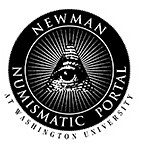
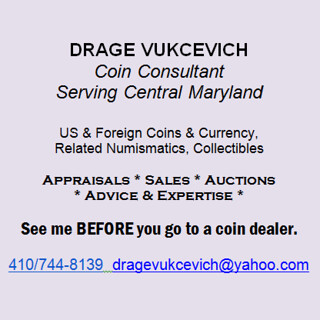
VIDEO: THE 1913 LIBERTY HEAD NICKEL
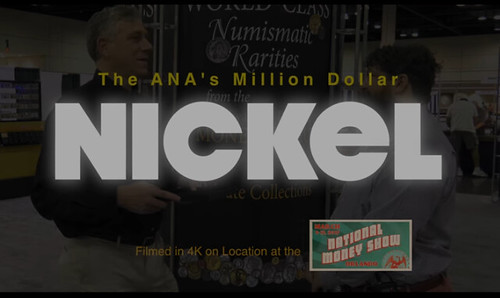
We meet up with Doug Mudd, former Manager of the National Numismatic Collection at the Smithsonian Institution and current Museum Curator of the Edward C. Rochette Money Museum to talk about the Bebee-ANA Specimen 1913 Liberty "V" nickel.
Only five examples of 1913 "V" nickel are known and each one is worth well over three million dollars. We discuss the history of the piece and how the hobby came to know about them and why the 1913 nickel always captures the public's imagination.
Everything was going smoothly... until Charles dropped the coin! No worries, though - no million dollar coin was hurt in the shooting of this CoinWeek 4K Video!
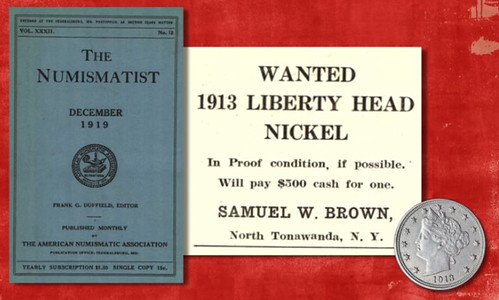
To watch the video, see:
CoinWeek IQ: Fail! We Drop a Million Dollar 1913 Liberty Head Nickel! – 4K Video
(www.coinweek.com/us-coins/1913-liberty-head-nickel/)
JEFF BURKE'S TIPS FOR SHARING COINS WITH KIDS
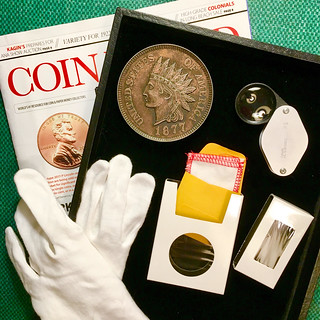 Back in the 1950s and ’60s, Eric Newman set a noteworthy example of inspiring budding numismatists by helping Boy Scouts earn their Coin Collecting merit badge in St. Louis. (Truth Seeker:
The Life of Eric P. Newman, pages 377-78). Since my own kids were very young, I’ve been thinking about how to get today’s young people similarly engaged in numismatics.
Back in the 1950s and ’60s, Eric Newman set a noteworthy example of inspiring budding numismatists by helping Boy Scouts earn their Coin Collecting merit badge in St. Louis. (Truth Seeker:
The Life of Eric P. Newman, pages 377-78). Since my own kids were very young, I’ve been thinking about how to get today’s young people similarly engaged in numismatics.
In my job as an instructional aide at Thomas Jefferson Middle School (TJMS) in Rockaway, New Jersey, I work with teachers to help foster an intellectually stimulating and productive learning environment for special needs kids and ESL learners. I have found four effective ways of sharing coins with students. These methods include gifts of inexpensive coins; passing along auction catalogs and other numismatic literature; arranging for kids to have the chance to handle coins from my own collection; and showing interest in seeing the coin collections of young collectors.
In early 2015, after a vacation in Peru with my wife, I brought back Peruvian coins of various denominations to share with a class of special needs children. When I learned that one student had developed an interest in collecting wheat cents, I helped him identify the dates and mint marks on numerous specimens. Now he has a burgeoning collection of wheat cents!
In 2016, another student told me about his coin collection. I expressed interest in seeing it, so he brought it to school (with discretion) to show me just before the holiday break. He took such joy and delight in showing me individual pieces! A few weeks later, I asked him if he likes to read coin magazines. He responded, “I’ve never had one before.” He was thrilled to receive a recent issue of Coin World from me! I observed him reading it during most of the next lunch period, pausing to show some pictures of coins to a friend sitting next to him. A few days later I gave this student the latest copy of The Numismatist, which caused further excitement! Another day, the child excitedly reported an amazing find to me at lunch. A classmate who was headed to buy a treat in the cafeteria showed him one of the nickels she planned to spend. When he saw it was a 1936-D Buffalo nickel, he promptly bought it from her for 5 cents. He couldn’t wait to show me his acquisition, which was only slightly worn. He has since reported that another classmate started her own coin collection.
I was excited to read Shanna Berk Schmidt’s “History in Your Hands Foundation: A New Approach to Teaching History,” in The Asylum, Autumn 2016, pages 40-44. Shanna explains how history can become living stories when students actually handle coins, for example, from the Roman era (refer to www.hiyhf.org for more information). Even when coins are not readily at hand, coin catalogs can provide inspiration. In September 2016, Christine Capen, fifth and sixth grade Social Studies teacher at TJMS, was teaching her students about the Byzantine Empire. To supplement the unit, I gave her a number of ancient and world coin catalogues with
Post-its to mark the sections for Byzantine coinage to share with students. Miss Capen then e-mailed the History in Your Hands Foundation for classroom materials. I also gave Christine a shopping bag full of ancient and world coin catalogs in October and another batch in November 2016. (Keep those coin catalogs in circulation!) Recently, Christine - who keeps the catalogs on a shelf in her classroom - told me one kid has been feverishly working his way through the entire stack!
Earlier this year, I brought selected examples from my modest coin collection to TJMS to show to Mrs. Dobb’s classes. Janet Dobbs, M. Ed., is a Special Education teacher for grades 6 and 8. In bringing my coins I hoped to awaken in our students some of the wonder and delight I feel in collecting. I am especially passionate about two facets of coin collecting: the preservation of coins, and treasuring the distinctive details that give each coin in my cabinet its own personality. Naturally, my time with the kids that day inclined towards these themes.
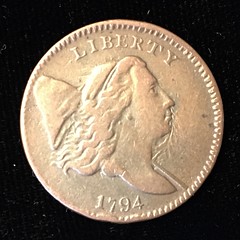
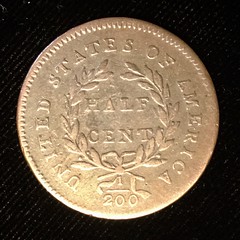
After showing students my Intercept Shield ten-slab storage box with its smaller individual boxes, I explained how each coin is a small piece of history and we are caretakers of that history for future generations. To appreciate how old the coins really are, I had them calculate the ages of some of the specimens as a math exercise. One girl commented on how well I’ve taken care of my coins. In turn, I was impressed to find that the students were very respectful toward the coins and handled them with great care. I had them wear cotton gloves to hold the early coppers. The kids were very excited to put on their gloves! Several asked if they could keep the gloves after the coin exercise. They took turns examining each coin over a black velvet jeweler’s tray. One eighth grader even held his breath while examining an early copper so he wouldn’t breathe on it!
To introduce them to the distinctive appeal of each coin, I guided them in using my magnifying glass to examine the hair and eye details on these early coppers, which included a raw 1794 C2a half cent in VF 20, and a raw 1794 S-31 large cent in 40/25. I pointed out the 1/100 and 1/200 fraction bars on the reverse sides of the large and half cents, tying the coins in with our discussion of fractions in math class with Mrs. Dobbs. The kids were very curious about the value of each piece, so I discussed price ranges for a few pieces and also noted the sentimental value of my coins based on their stories. To build up to the 1877 Indian Head cent, I mentioned that due to its low mintage, this coin was already scarce the day it was minted. The growing popularity of this coin resulted in it being depicted on a U.S. postage stamp in 1978 and other non-numismatic items such as Avon bottles. A key prop for this event was a metal coaster designed as an oversized 1877 Indian Head cent which helped the children understand the significance of this coin. We examined an 1877 Indian Head Cent PCGS EF 45, and a 1909-S IHC NGC MS 64 BN. It was quite a thrill for me to share my precious coins with these students! TJMS Principal Stephanie Bonaparte decided to post some pictures Janet took of our coin activity on the TJMS Facebook page. Even though I was nervous about bringing my coin collection to school, I discovered that our students enthusiastically rose to the occasion.
Knowing how technologically savvy kids are, I have searched the Internet for websites that could also help spur their interest in coin collecting. Two engaging sites are:
- The American Numismatic Association’s “Money’musements” page, where children can play fun numismatic games: https://www.money.org/money-musements
- The U.S. Mint’s “History in Your Pocket Change” program: https://www.usmint.gov/kids/
We need to develop more interactive websites, social media and educational games to pique student interest in collecting coins and numismatic literature. For example, there are plenty of apps for numismatists to help organize their collections and conduct bourse treasure hunts. However, there remains a dearth of coin apps for kids!
Remember the joy of your early experiences with coins and numismatic books? Recapturing that with kids will inspire them as they begin their own journeys. Both traditional, one-on- one activities and creative new virtual experiences can help children today dive into the world of numismatics. May their adventures (and ours!) long continue.
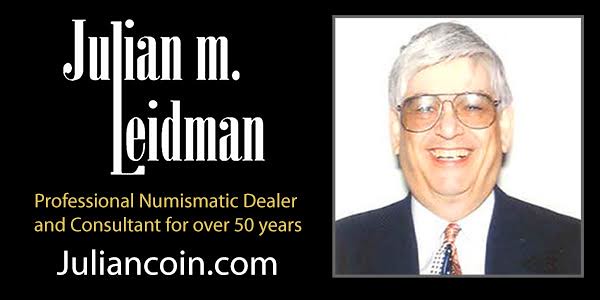
PRIVATE GOLD COINS OF CALIFORNIA
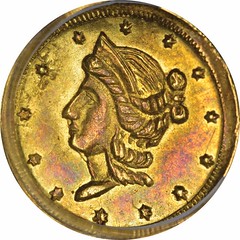 The item in last week’s E-Sylum by Michael Bugeja on fake California fractional gold coins, plus earlier statements in John Lupia’s numismatic biographies, attest to the competing
definitions as to what constitutes a private California gold “coin.” Perhaps this simplified summary will clarify matters.
The item in last week’s E-Sylum by Michael Bugeja on fake California fractional gold coins, plus earlier statements in John Lupia’s numismatic biographies, attest to the competing
definitions as to what constitutes a private California gold “coin.” Perhaps this simplified summary will clarify matters.
First, there are the pieces struck from 1849 through 1855 in San Francisco, in denominations from $5 to $50, which were represented as having the full gold value equivalent. (Some didn’t.) They are described on pp. 390-402 of the 2017 Red Book, chapters 4 through 7 of Dr. Donald H. Kagin’s Private Gold Coins and Patterns of the United States (except pp. 119-122), and cataloged in Edgar H. Adams Official Premium List of United States Private and Territorial Gold Coins (1909), pp. 44-60, and his Private Gold Coinage of California, 1849-55, Its History and Its Issues (1913). All these were expected to pass current at face value; all are very expensive today.
Second, the small (“fractional”) pieces in denominations of ¼ dollar to 1 dollar, issued beginning in 1852. Besides the lack of larger coins that led to the formation of private mints, there was also an extreme shortage of small change in California in the early 1850s. In the Annals of San Francisco, concerning the year 1851, the authors wrote,
“Specimens of nearly all the coinage of the civilized world were in constant circulation. Approximate values were bestowed upon the pieces, and if anything like the mark, they readily passed current. The English shilling, the American quarter-dollar, the French franc, the Mexican double-real were all of the same value; so likewise were the English crown, the French five-franc piece, and the American or Mexican dollar. It did not matter although some were twenty-five per cent. more worth than others. Four single francs were quite as good as the English five-shilling piece. The smaller silver coins of whatever denomination and of every country were all alike bits, and passed for the same value.”
With citizens indifferent as to the value of small change, jewelers stepped in to make their own quarters, halves, and dollars—though also overvalued.
Further evidence is found in an article in The Jewelers’ Circular-Weekly, Feb. 5, 1919:
“There was no such thing in those days [1849-early 1850s] as a one-price system. The jeweler sized up his customer and charged accordingly. The price was paid in gold dust. Scales stood on the counter and the jeweler weighed out enough of the dust to cover the cost of the sale….To facilitate trading where small amounts were involved, 25 cent, 50 cent and $1 gold coins were in current use, it being rather difficult to weigh out such small quantities of dust.”
Too small for a pocket, these coins were carried in gold dust pouches. (See Breen-Gillio, California Pioneer Fractional Gold, second edition, for extended quotations from these and other sources. These small coins were not noticed by Adams.)
Never carrying their full value, weights of these issues were reduced by 1853, with little effect on circulation. But the coin shortage eased when the new San Francisco mint began coining quarters and halves in 1855 and dimes in 1856; 1856 is the last common date before 1859, by which time they were purely souvenirs or charms. In the first edition of California Pioneer Fractional Gold, Walter Breen defined Period One, 1852-1856, as “Historic Gold Rush Small Change.” (Since a few rare pieces are dated 1857, Period One was extended to 1857 in the second edition.)
In 1859 (one piece is dated 1858), small California gold reappeared; Breen labeled these Suppressed Jewelers’ Issues, because they were suppressed by the Secret Service in 1883 (last date is 1882, though; some were backdated by then), defining Period Two as 1859-1882 (1858-1882 in second edition). As time went by, these pieces became much lighter and almost paper thin. In the 1893 edition of Scott Stamp & Coin Co.’s Standard Coin Catalogue. Silver and Gold., p. 8, the cataloger writes,
“1875 is about the closing year of ¼, ½, and $1 pieces which possessed weight and fineness approximate to legal issues and were current; thereafter followed base representations, charms, bangles, etc., which we do not chronicle or traffic in.” In John Lupia’s biography of Ernest Haquette (E-Sylum Vol. 20 No. 7), he notes that Haquette paid $1.00 each for California “gold Quarters and Half Dollars dated prior to 1870…when Fine. No demand for charms.”
Thus, Scott carried Period One as late as 1875, while Haquette cut it off at 1870; Breen stopped at 1856, with which date most specialists agree. However, the entire series is now considered “genuine,” and is so listed in the Red Book, pp. 407-408.
Breen included a Period Three, outright modern counterfeits. Some of these were actually restruck in recent years from original (counterfeit) dies. ALL BG numbers beginning with 1300 are counterfeits, though (as with other counterfeits), there are specialists who collect them.
Finally, we have the so-called “tokens,” condemned in the Red Book and by Bugeja. These began in 1872, following the 1871 arrest of jewelers (in Leavenworth, Kansas!) who were making “California gold pieces.” Round dollars were discontinued that year, and one maker introduced the head of Washington to avoid too much similarity to U.S. coins. No enforcement appeared in California until 1876, though, but this led to the abandonment of octagonal dollars also, backdating, and the introduction of denominationless pieces reading ¼ CAL GOLD, etc. instead of ¼ DOLLAR. (See California Pioneer Fractional Gold, second edition, p. 39, for a fuller explanation and illustrations.) Modern “tokens” do not even contain gold. The best reference for them is Mike Locke’s website, http://www.calgoldcoin.com/ .
To read the earlier E-Sylum articles, see:
FAKE CALIFORNIA FRACTIONAL GOLD COINS (www.coinbooks.org/v20/esylum_v20n11a15.html)
THE JOSEPH BROTHERS (www.coinbooks.org/v20/esylum_v20n02a16.html)
ERNEST HAQUETTE (1845-1911) (www.coinbooks.org/v20/esylum_v20n07a15.html)
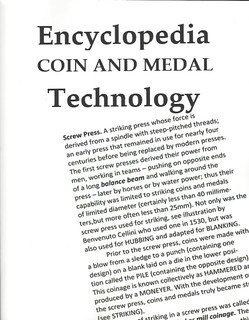
LAST CALL
If you want a copy of this incredible book order now at the discounted price of $50. Price goes up to original price of $100 on April 15 if any copies are still available.Encyclopedia of Coin and Medal Technology
1,854 entries on every aspect of how coins and medals are made, cataloged and collected., Sample entries in recent E-Sylum issues as Vocabulary Words. Do not miss this opportunity! 678 pages, card cover. . . . .$50
Monograms of American Coin and Medal
Artists. Identifies over 450 initials and monograms found on American coins and medals. 147 pages, card cover. . .. . . $45
Who’s Who Among American Medallists.
Biographies of 4,137 artists of American coins and medals, with some as long as 4 pages. With article of American Art Styles, bibliography 386 pages, Hard cover. . … $65
Dick Johnson 139 Thompson Drive Torrington, CT 06790
OXFORD SOCIETY DISPLAYS AMERICAN COINS
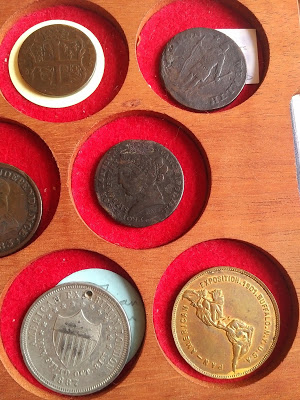
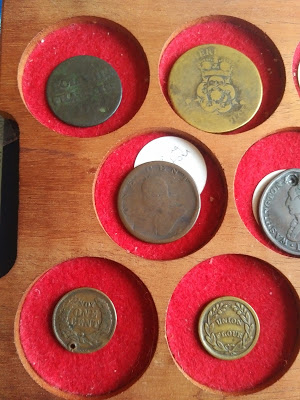
The March meeting was on the coins of the USA. here are some coins members brought along.
American coins
A1 French Coinage for Canada and Louisiana:
In 1721-1722 the mints at Rouen (mintmark B) and La Rochelle (mintmark H) produced a copper nine deniers coin for the colonies using copper planchets imported from Sweden. In the summer of 1722 over
a half million (534,000) nine deniers coppers were shipped to Canada. Canadians disliked this coin because it was underweight and was not accepted in the British colonies.
A2 Rosa Americana Tokens 1722-1724:
William Wood, owner of several copper and tin mines, hoped to make a profit producing coins for use in Ireland and America. The coins were made of an alloy called Bath metal composed of 75% brass,
20% zinc (mixed with tin and bismuth) and 5% silver and were to weigh slightly less than half the weight of English coins. Wood produced twopence, penny and halfpenny coins dated 1722-1723. These
underweight coins were not generally accepted by the colonists.
A3 The Virginia Halfpenny of 1773:
These coins, designed by Yeo, were made at the Tower mint in London. The Revolution broke out just before they were not used until after the war. The halfpenny displays the bust of George III on the
obverse with the shield of Virginia on the reverse.
A4 Massachusetts 1787 cent produced locally
B1 The Washington Double Head Cent Token:
This is one of four interrelated Washington tokens of which three bear the date 1783 and two have the designation of "ONE CENT". The Military Bust token was designed by Thomas Wells Ingram
and was struck at Bolton's Soho Mint in Birmingham, England between 1820 and 1848, with the 30's or 40's appearing more likely as the token was still in circulation at mid century. Little
is known about the Double Head token. It is usually considered to be an imitation of the military bust by an unidentified Birmingham mint.
B2 Washington Military Bust Tokens:
The obverse depicts a laurel wreathed bust facing left in a military uniform with the legend "WASHINGTON AND INDEPENDENCE" and the date 1783 commemorating the end of the Revolutionary War.
Clearly, the bust is meant to represent George Washington. However, the central bust punch used for this series was originally produced and used for the Wellington peninsular tokens. They were
ordered by J. Picard of Hull from the Birmingham factory of the button and medal maker Sir Edward Thomason. The Wellington tokens were struck at Thomason's press with dies and punches cut by
Thomas Halliday, a die-sinker located on Newhall Street in Birmingham.
B3 Merchant token 1850s
Bust of Liberty left, LIBERTY on tiara, PROFESSOR. JOHNSON'S. SOAP & STARCH POLISH. around, 317.BOWERY.N.Y. curves in front of portrait. Rv. Federal-style eagle, FOUNTAIN. BLACKING BRUSH & FRENCH
BLUEING around, UNITED. STATES. arcs above eagle's head.
C1 Not one cent
This is an unofficial Civil war period token
C2 And a store token C3
The American Exhibition was a world's fair held in West Brompton London, in 1887 in the year of Queen Victoria's golden jubilee.
Support for an exhibition had been sought in 1886, but with a loss of support and the British government insisting that an American exhibition not compete with the Colonial and Indian Exhibition, the American Exhibition was deferred to 1887. The American aim of participating was to display the latest agricultural, mechanical and textile products and inventions from the United States, but the main attraction was the Wild West show featuring Buffalo Bill, part of Colorado's contribution
C4 American exhibition
The Pan-American Exposition was a World's Fair held in Buffalo, New York, United States, from May 1 through November 2, 1901. The fair occupied 350 acres (1.4 km2) of land on the western edge of
what is now Delaware Park, extending from Delaware Avenue to Elmwood Avenue and northward to Great Arrow Avenue. It is remembered today primarily for being the location of the assassination of
President William McKinley.
To read the complete article, see:
http://oxfordnumismaticsociety.blogspot.co.uk/
DR. GORDON SHAW NEW JERSEY COPPER COLLECTION
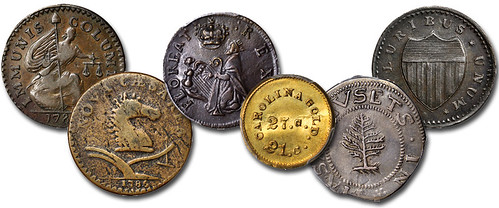
The name Dr. Gordon Shaw is likely unknown to all but a few of today's New Jersey copper collectors. He began collecting coins seriously in the early 1980s, focusing on U.S. type coins, large cents, colonial type coins, and New Jersey coppers, with most of his efforts dedicated to the last two specialties. Though he hailed from Chicago, he found the history of New Jersey and its coinage fascinating; his personal connection to the state came through his wife Margie, who was originally from there. His most avid collecting period was from about 1981 to 1994, and as his purchases of U.S. coins became fewer, his dedication to New Jersey coppers grew.
Dr. Shaw began his New Jersey coppers collection 1981, and at first he mostly purchased modest coins from fellow collector Richard August. He expanded his reach, increasing his sources to include auction companies like Bowers and Ruddy (later Bowers and Merena), Stack's and Early American Numismatics (Dana Linett). From EAN he acquired some significant coins from the famous Garrett Collection, the sale of which immediately preceded his entry into active collecting. The decade spanning 1983 to 1993 featured the auction sales of many significant colonial and specifically New Jersey coppers collections by Bowers and Merena and Stack's. These allowed Dr. Shaw to add countless varieties to his set, including great rarities, Condition Census coins, and pieces pedigreed to significant collections. By the time his collecting activities ceased circa 1994, Dr. Shaw had collected 101 different Maris numbers, many of superb quality, achieving a goal most collectors can only dream of.
The statistics of Dr. Shaw's collection are interesting. Stack's Bowers received 167 New Jersey coppers from the Shaw family, including five duplicates that are being returned to the family as keepsakes of their beloved husband and father. The remaining 162 pieces at first represented 101 Maris numbers, including Maris 78-dd (actually a die state of Maris 77-dd) and Maris 82-hh (now better known as a fantastic flipover double strike of Maris 36-J). Subtracting these two Maris numbers leaves us with 99 die combinations. During the course of cataloging the sale, we discovered three incorrect attributions, chiefly from the 1983 GSNA Auction by Kurt Krueger. Netting these out leaves us with 96 die combinations, still a significant feat, given that there are 144 total possible die combinations, 28 of which are R-8 or unique. In the end, Dr. Shaw collected 83% of the 116 die combinations that are not prohibitively rare.
As we know, Dr. Shaw early on acquired some coins from the Garrett Collection sale, and he quickly learned that "ex Garrett Collection" meant a coin that was often the best in its class and always highly sought after. In his decade or so of collecting, he added 16 coins from the Garrett Collection, 15 of which were also from Dr. Edward Maris' own famous collection sold at auction in 1886. Several of these were plate coins in Maris' landmark photographic plate that accompanied his magnum opus A Historical Sketch of the Coins of New Jersey, published in 1881. These Maris-Garrett coins are avidly sought by astute collectors today, as they are often significant for their quality. At the very least they are historical connections to the nascent days of New Jersey copper collecting. And it has been decades since this many ex Garrett New Jersey coppers have been offered in a single venue.
The significant pedigrees do not end at Maris and Garrett, however. Dr. Shaw managed to collect coins that from collections representing a Who's Who of colonial and New Jersey numismatics of the last century and a half: Bushnell, Parsons, Mills, Stickney, Hays, Hall, Brand, Green, Ryder, Boyd, Spiro, Deats, Douglas, Downing, Norweb, Bareford, Foreman, Oechsner, Hessberg, Sherr, Roper, Picker, Taylor, Ford, H. Garrett, Anton, and August.
The dispersal of Dr. Shaw's collection represents an opportunity for collectors of all stripes.
To read the complete article, see:
New Jersey Coppers Featuring the Collection of Dr. Gordon Shaw
(www.stacksbowers.com/News/Pages/Blogs.aspx?ArticleID=2464)
SOME INTERESTING MEDALS: MARCH 19, 2017
VANITAS by Marika Somogyi (SOM #113)
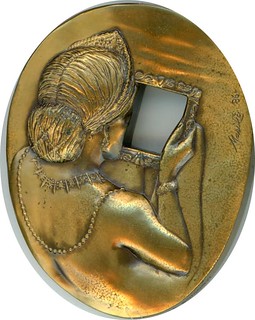
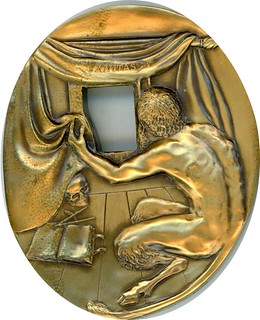
2. SOM #113, 1985. VANITAS. 70.8 x 60mm. Oval.. Marika Somogyi, Sc.
Uncirculated. Original pamphlet. “A mirror cries out for a beautiful woman. John Milton is Paradise Lost wrote, "In naked beauty more adorn'd, more lovely, then Pandora." In sculpting
the naked woman admiring herself in a mirror, I created the ultimate representation of vanity, one of the seven deadly sins on the medieval world. Accordingly, on the other side of the medal, peering
through the looking glass, waits the devil." $85.00
ERUDITA VANITAS Medal by John Cook
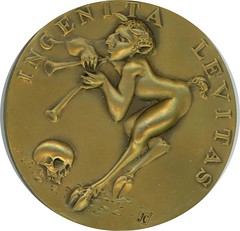
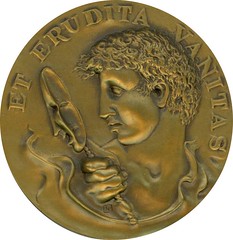
9. SOM #105, 1981. 73mm. Bronze. John Cook, Sc. Uncirculated. Obverse: Faun with pipes. Reverse: Man with mask. 750 struck. Original pamphlet.
The artist states, "INGENTIA L.EVITAS ET ERUDITA VANITAS" (Frivolity is inborn and conceit is learned) This brief couplet from Cicero's Pro Flacco presents a profound opposition of the dionysian and appollonian aspects of man's nature. Being deeply moved both by the wit and the simple beauty employed in the fusing together of these diverse elements, I have tried in sculptural terms to achieve a like coupling. The style, derived from classical forms, I see as a challenge to the contemporary artistic idiom which too often lacks both levity and erudition." $85.00
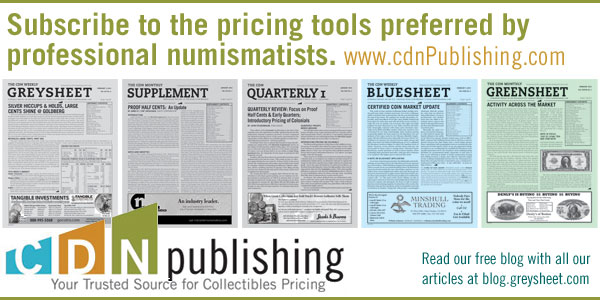
RAY CZAHOR'S PHILIPPINE MAIL BID SALE XXI
Mail Bid XXI contains over 2370 lots across 40 pages and concludes on Monday May 1, 2017. It contains 140 lots of books and numismatic catalogs, 930 lots of coins, military tokens (many rare and seldom offered) and medals, Interest in Spanish Philippine issues seems to be increasing and the list will include PI Gold and a number of scarce Counterstamps not sold in my Stack’s auction two years ago.
The US/Philippine coin highlight of the sale is an 1906S Peso in lustrous AU condition, seldom offered in recent auctions plus a complement of several 1903-1908 proof sets. Within the 1110 lots of paper money offered are Philippine issues (with replacement notes, short snorters, and advertisers) and 50 lots of MPCs and old US notes (including the SCARCE $10,000 Gold Certificate in AU condition!) Over 6000 Japanese Invasion Money (JIM) notes across all WWII countries occupied by Japan are offered. The currency selection continues with a wide selection of 460 lots of Philippine Guerrilla currency with many Cagayan, Leyte, Palawan, and Samar notes including municipalities.
Rounding out the sale are several lots of Japanese and Manchukuo bonds, Croation WWII stamps, Chinese Hell notes, and 60 lots of World coins and currency. The list concludes with a significant 150 lots collection of early US/Philippine stamps and first day covers as well of seldom offered paper collectibles.
Mailbid XXI List is available by contacting Ray Czahor at Cookie Jar Collectibles, PO Box 428, Savage, MD 20763 or cookiejarpi@verizon.net , or at 301-604-9225.
1906 Philippine One Peso (Lot 564)
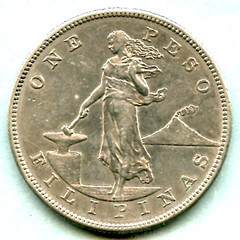
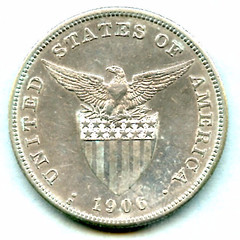
1912 Series Bank of Philippine Islands 50 Pesos Banknote (Lot 897)
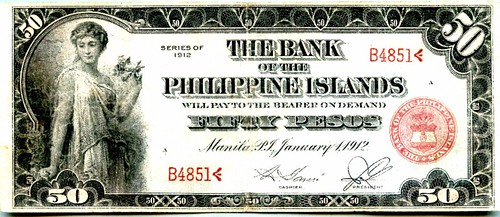
1928 Series Bank of Philippine Islands 100 Pesos Banknote (Lot 907)
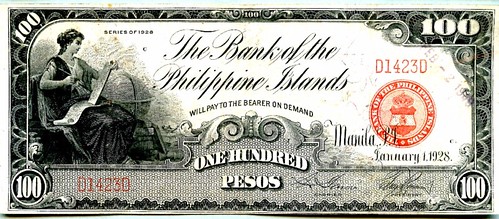
Series of 1900 $10,000 Gold Certificate (Lot 1088)
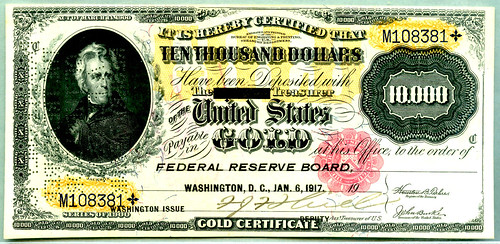
1980 Philippine Gold 2500 Piso (Lots 650 and 651)
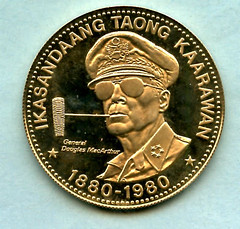
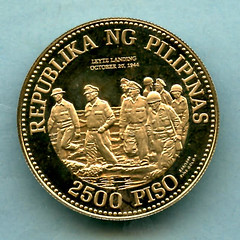
Philippine President Quezon Service Cross Medal (Lot 793)
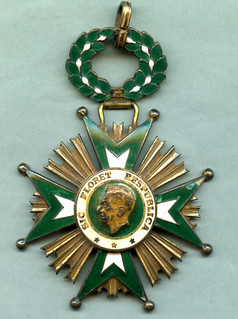
1941 Series Philippine Islands Treasury Certificate 5 Pesos WWII Processed Banknote (Lot 2500)
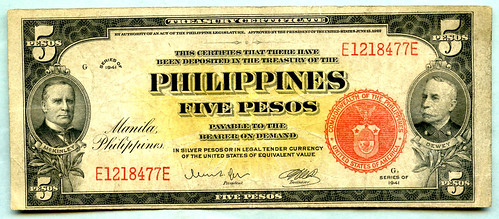
LOT 2500 MAJOR FIND—Ray has never handled this note before—literally fell out of a group of CM Nielsen’s research papers Ray was sorting in an envelope marked "Military Issues” with 5 other notes: P91b Treasury Certificate 1941 5 Peso Processed Note, SN E1218477E Condition = Fine Mr. Nielsen wrote on a sticky with this note: “Released to ARMY Hdgs Brisbane RARE”. With this note, maybe 4 known according to Neil Shafer! A P92b 10 Peso, two known, sold in the 2012 Pineda sale for $20,0000! Minimum Bid = $12,000
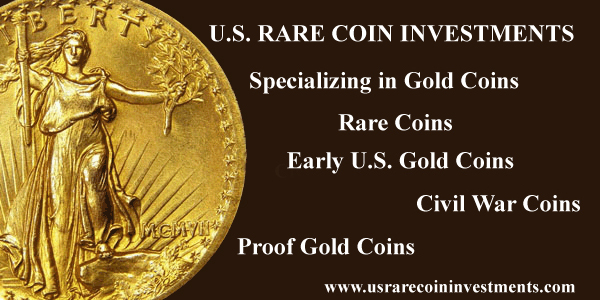
NUMISMATIC NUGGETS: MARCH 19, 2017
American Legion School Award Medal
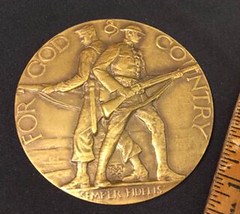
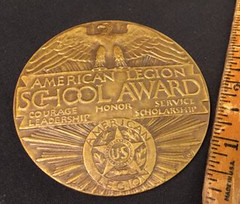
To read the complete lot description, see:
American Legion School Award, Bronze Coin or Medal
(https://bid.deyoungauctions.com/lots/view/1-86GBJ/american-legion-school-award-bronze-coin-or-medal)
To read the earlier E-Sylum articles, see:
THE AMERICAN LEGION SCHOOL AWARDS (www.coinbooks.org/esylum_v17n06a26.html)
THE 1950 AMERICAN LEGION SCHOOL AWARD MEDAL (www.coinbooks.org/esylum_v19n51a11.html)
U.S. Mint Bicentennial Bronze Medal
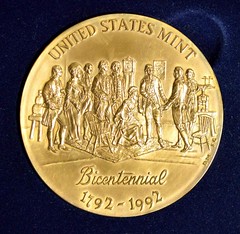
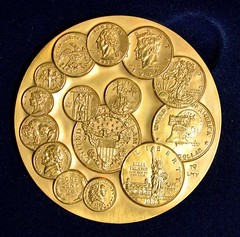
Description: United States Mint Bicentennial Bronze Medal 3" (721)
To read the complete lot description, see:
Lot 30X: United States Mint Bicentennial Bronze Medal 3"
(www.invaluable.com/auction-lot/united-states-mint-bicentennial-bronze-medal-3-30x-c-39b47ee861)
Bar Mitzvah Gold Medal
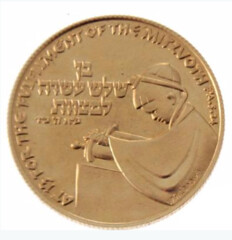
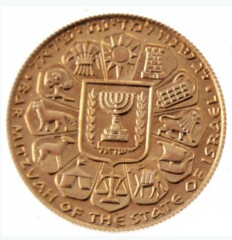
Bar Mitzvah - Three Gold Medals Set.
Including:
Gold medal, 27mm, 15gr.
Gold medal, 22mm, 8gr.
Gold medal, 19mm, 5gr.
Gold 750.
Total 28gr.
Original fitted case with a vacant cartouche.
To read the complete lot description, see:
Lot 175: Bar Mitzvah - Three Gold Medals Set. (www.invaluable.com/auction-lot/-1-c-34E43B8A56)
Loubat's Medallic History of the U.S.
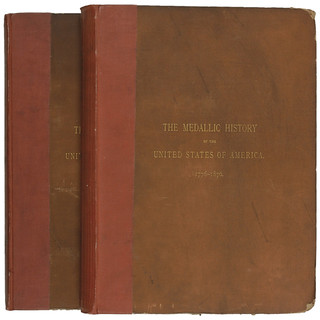
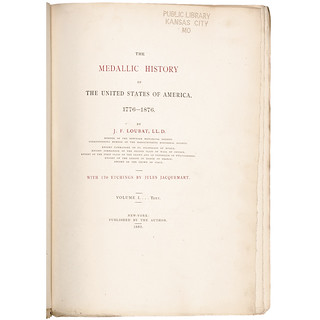
1880-Dated, Folio Size Book, “The Medallic History of the United States of America 1776-1876” by J.F. Loubat with 170 Engravings by Jules Jacquemart, 2 Volumes, About Very Fine.
This is the original, folio size, Deluxe Edition of Loubat’s work on early United States Medals. Each volume measures 14.5” x 10.5” and is printed on paper specially prepared in France for this work. The text volume, containing 478 pages, plus a 69 page introduction, was privately printed in New York, while the plate volume, containing 16 pages plus 86 full page plates -- each illustrating only one medal -- was printed in France. This work was copyrighted in 1878, but the printed date on the title page is 1880.
Loubat chose 86 American medals which he considered the most significant, and devoted this work to those medals, not only describing them, but also publishing documents related to the medals. Among the medals shown is the 1792 oval George Washington Indian Peace Medal; the Daniel Morgan Battle of Cowpens Medal; the Anthony Wayne Stony Point Medal; and the 1776 George Washington “Boston Retaken” Medal. This was one of the pioneering works in American numismatics, and original copies are rare today.
This set is ex-library, with the usual library markings, and has a library rebinding using the original dark orange covers, which contain the title in gold lettering, and are well worn along the edges and corners. The contents, however, are in excellent condition, and thanks to the special paper, are not foxed. A fabulous piece of American numismatic publishing. (2 books).
To read the complete lot description, see:
“Medallic History of the United States” by Loubat
(www.earlyamerican.com/Auctions/ClientPages/lots.item.php?auction=95&lot=275)
Banco Central de Guatemala Specimen Note
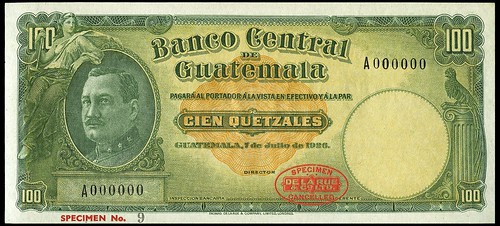
WORLD BANKNOTES, Guatemala, Banco Central, One Hundred Quetzales, 7 July 1926, A 000000, De la Rue stamp at lower right, specimen stamp at lower left (Pick 10s).
To read the complete lot description, see:
WORLD BANKNOTES, Guatemala, Banco Central, One Hundred Quetzales,
(www.dnw.co.uk/auctions/catalogue/lot.php?auction_id=456&lot_id=539&)
Northern Ireland Belfast Banking Co Twenty Pounds
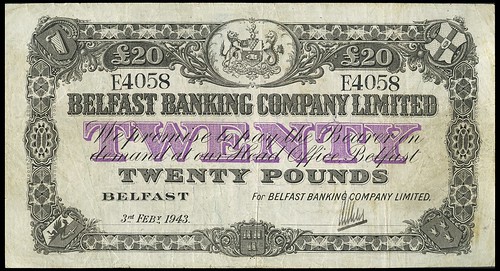
BRITISH BANKNOTES, Belfast Banking Co Ltd: Northern Ireland, Twenty Pounds, 3 February 1943, E 4058, signature of A. Wales (BB 79; Pick 129c)
To read the complete lot description, see:
BRITISH BANKNOTES, Belfast Banking Co Ltd: Northern Ireland, Twenty Pounds,
(www.dnw.co.uk/auctions/catalogue/lot.php?auction_id=456&lot_id=187)

TOM KAYS' NUMISMATIC DIARY: MARCH 14, 2017
Despite plans for a dinner in Baltimore in conjunction with the Whitman - Baltimore Spring Expo in March, some Nummis Nova hardcore members met despite snow, ice, and high winds, at a charming and cozy restaurant near the Eisenhower Avenue Metro Station. Delia’s Mediterranean Grill and Brick Oven Pizza was a pleasant surprise for those new to this dining venue. In fact, and I quote: “This was the best choice of restaurant of any recent Nummis Nova dinner,” said Gene Brandenburg, who appreciates fine dining. Eight of us (Gene, Joe Esposito, Dave Schenkman, Steve Bishop, Jon Radel, Robert Hoppensteadt, me and Wayne H. (#1) - Herndon - who was wearing a company shirt with his name embroidered on it so we could tell him apart from the other Wayne H.) relaxed in splendid comfort, as odd coins and appetizers led the way into dinner and numismatic conversation.
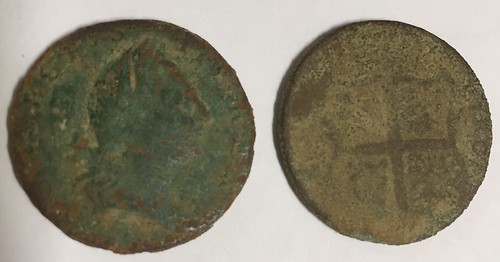
Figure 1: 1773 Virginia Halfpennies found at Richmond (with slightly different diameters)
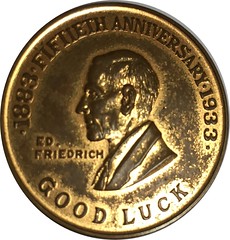
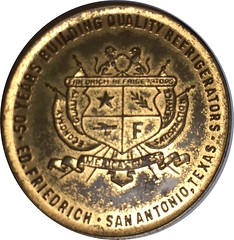
Figure 2: 1883 - 1933 Fiftieth Anniversary of Ed. Friedrich Refrigerators in San Antonio, Texas
Few followed our mid-March theme to bring something green, Irish, and/or lucky, instead bringing whatever objects lay at hand, found an hour before heading out the door for dinner. I know it works that way with me. Seen were a pair of “green” Virginia Halfpennies excavated at Richmond, (Figure 1) a “lucky” token commemorating the fiftieth anniversary of the Friedrich Refrigerator Company from a surprisingly early year (Figure 2), and more nondescript George II coppers, not all of which were Irish, but when you are heading out the door, coins from anywhere near the British Isles come as close to “Irish” as could be found in a pinch. Sorry for any with Britannia reverses. Erin go Bragh!
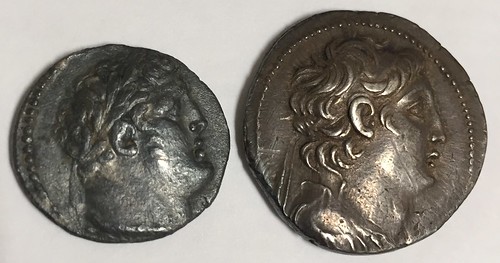
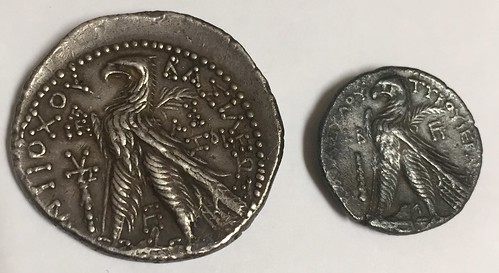
Figure 3a: Obverse Half Shekel (126 – 55 B.C.) [Ex: Clain-Stefanelli/Greenwald and Jackson Collection] and Full Shekel (138 – 129 B.C.) of Tyre in size comparison
Figure 3b: Full Shekel and Half Shekel of Tyre in size comparison
Talk turned to remembering the son of Vladimir and Elvira Clain-Stefanelli, their son Alex, who was born into one of the first families of numismatic researchers. Two coins that once belonged to Alex caught the attention of Robert, our ancient coin expert. (Figures 3a, 3b) Shekels of Tyre are well known coins with Biblical connection, possibly being among the “Thirty Pieces of Silver,” but it was a Half Shekel that was needed for Temple Tax. Full shekels had to be exchanged for Half Shekels by the money changers in the Temple whose tables were overturned in demonstration of their secular presence in a sacred space. Half shekels of Tyre are scarce in comparison to full shekels.
We noted the recent passing of Ivor Noel Hume, Archeologist, (re) discoverer of Martin’s Hundred, and author of In Search of This and That, which includes images and descriptions of interesting early coins, jetons, and tokens found in colonial context. Some of us at the table met him and we exchanged remembrances.
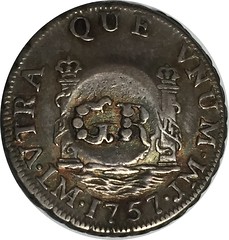
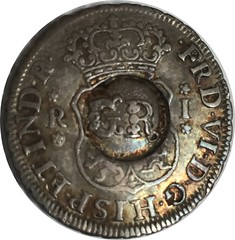
Figure 4: 1757 Lima, Peru, One Real with Jamaica, fancy “GR” Counter Stamp of 1767 (Ex: Mendel Peterson)
We also remembered Mendel Peterson, an expert in underwater archeology, who obtained interesting and significant treasure coins. A nice Lima one real of 1757 with Georgius Rex (GR) counterstamp of Jamaica from 1767 was seen at dinner, and attributed to Mendel Peterson. (Figure 4).
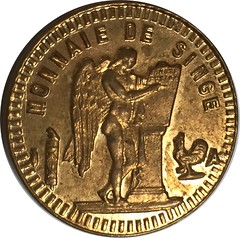
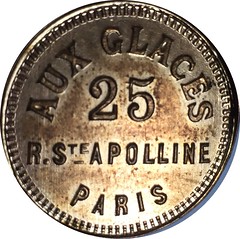
Figure 5: French 25 Centimes “Monnaie de Singe” token reminiscent of coinage of the French Revolution for Aux Glaces on the Rue Ste Apolline, Paris
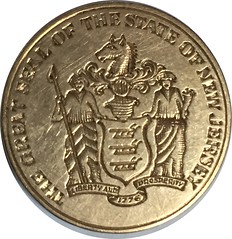
Figure 6: Golden “Great Seal of the State of New Jersey” from an older collection
An odd case of coins and tokens circulated for show and tell, before the lamb chops and salmon tricolare, that had a Parisian “glaces” shop token reminiscent of coins of the French Revolution (Figure 5) and a uniface, golden, Great Seal of the State of New Jersey, acquired by an old time collector during WWII (Figure 6). It is not a proper seal since it would leave a reverse impression, but may rather be an official button, done in good style, and hopefully in solid gold!
We missed seeing Eric Schena who was inundated with snow out to the West earlier in the day, and should not have attempted the long slippery drive, and didn’t. I have a surprise for him. Gene gave me to hold for Eric, the original container for a hoard of Russian Wire Money assembled long ago that Eric studied in his youth.
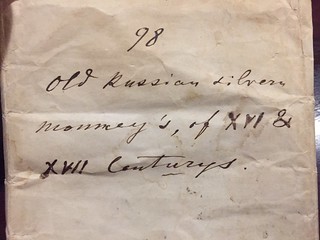
Figure 7: Curious envelope that held an old hoard of Russian Wire Money
The 3 inch, hand folded envelope seems to be vellum rather than paper, with old quill and ink writing. The “paper” is without foxing and reads in accented English, “98 Old Russian Silver Monney’s of XVI & XVII Centuries.” Inside are smaller, folded envelope “tubes” of the same material reading: “25 Kopeika’s John’ I the Terrible,” “1 Denga & 15 Kopeika’s Bozys Hofunov,” in the fold, and “20 Kopeika’s of the ‘Zar Theodor.” It is a most curious old coin holder.
We will need to ask Eric what he found in the envelope when he attributed its contents years ago. Many other marvelous curios circulated that night, including rare tokens, medals, and coins from folks down the table from me, so that I didn’t hear or capture all their stories before the warmth, wine, good food, and good company on such a cold and windy night, plunged us into that “food coma” a really good meal can achieve. You just need be there, stay awake, and walk the restaurant instead of eating to get all the stories on paper.
Washington Funeral Urn Medal
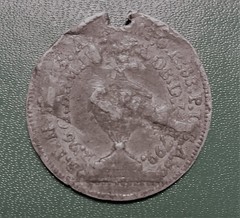
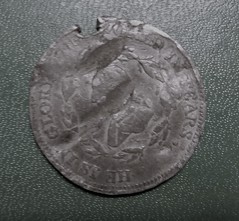
Joe Esposito adds:
I brought along a Washington Funeral Urn medal which has endured many trials since 1800. Still, it has character and represents an iconic piece of Washingtoniana.
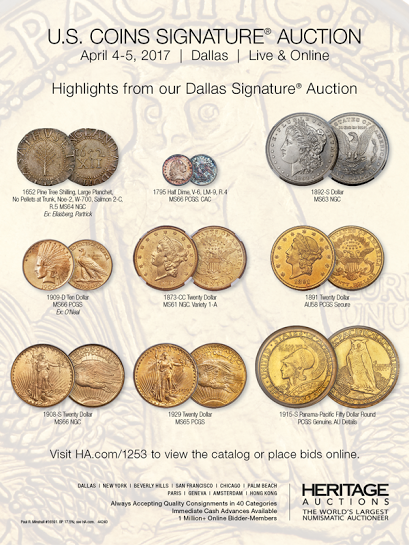
HOWARD BERLIN'S NUMISMATIC DIARY MARCH 19, 2017
I had been in Hamburg (Germany) for a few days, planning to make a few day trips to two nearby cities/towns before traveling on to Schwerin, the capital of the German state of Mecklenburg-Vorpommern.
On Tuesday I took a day trip to Glückstadt (“Fortune City”) on the shores of the Elbe River northwest of Hamburg. A few at my hotel would say, what’s there in Glückstadt?” a small town of about 12,000 people in the German state of Schleswig-Holstein, but was originally part of Denmark. I would tell them that this year is the 400th anniversary of the town founding by Denmark’s King Christian IV who reigned from 1603 to 1648, and was the first Danish king to establish connections with Jews. This happened because he needed a mintmaster to run the Mint in the newly planned town and, in 1619, Albert Dionis (Denis) was appointed to this post. Dionis, a Sephardi Jew, "of the Portuguese nation" as they came to be designated in Denmark, had settled in Hamburg in 1605 where he developed an extensive import-export business. Dionis thus became the first Jew to be issued a royal Danish letter of protection.
The next was a day trip to Hannover (aka Hanover), the capital and largest city of the German state of Lower Saxony, and was once by personal union the family seat of the Hanoverian Kings of the United Kingdom (Niedersachsen). For example, George II was King of Great Britain and Ireland, Duke of Brunswick-Lüneburg, AND Prince-elector of the Holy Roman Empire from 1727 until 1760. Much of Hannover’s history is connected to the British Empire. My primary purpose in coming to Hanover was to see the coin cabinet of the Lower Saxony State Museum and meet with its curator.
A few pictures:
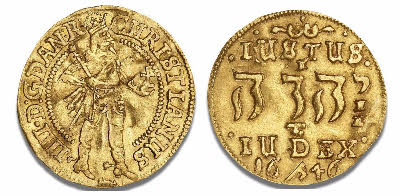
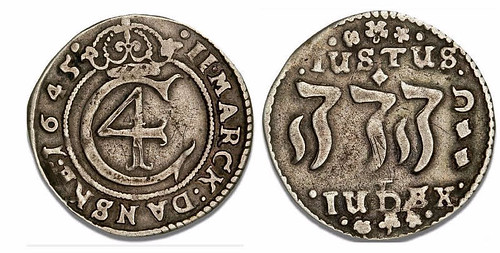
These are two of the Danish coins issued during the reign of Christian IV with Albert dionis as the mintmaster. It is unusual in that on the coin’s reverse (back), there is the Tetragrammaton – the 4-letter Hebrew word of God’s name. The Tetragrammaton also appears on many early coins of Sweden. Although the Tetragrammaton was a prominent element on coins during the last four years of Christian IV’s reign, one thought it was due in part due to his Jewish mintmaster. Another thought is the king considered the Hebrew letters some sort of talisman of good luck symbol instrumental in helping him defeat Sweden in the two-year Kalmar War that ended in 1613.the gold coin is a 1646 1 ducat; the silver is a 1646 2 marks (12 marks equals 1 ducat).
If you can get to Hamburg on Thursday March 23, you will be in time for a 5-course craft beer dinner (there’s five FOOD courses also, not just a 5-beer only dinner). Water is even included with the 55-euro ($58.40) price tag. This is being held at the hotel I usually stay at in Hamburg – the Reichshoff Hamburg, which is right across from the central train station.
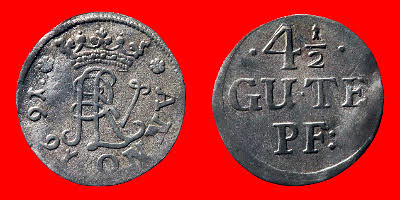
If you collect coins AND drink beer (perhaps not at the same time), one of the many items on display in the Lower Saxony State Museum coin cabinet exhibit is was a coin that was called biermünze – beer coin. As the short version goes, four pennies (i.e., pfennige) was a common denomination then and was conveniently equal to the tax on a glass/tankard of beer. In the Duchy of Brunswick and Lüneburg, located in what was then southern Lower Saxony, the beer tax was raised to 4½ pennies and thus necessitated a new coin, nicknamed biermünze.
TROMPE L’OEIL ART AT THE CRYSTAL BRIDGES MUSEUM
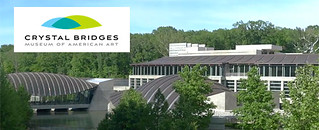 In November, my wife and I took a little trip into northern Arkansas and southern Missouri. In Arkansas, we went to Bentonville to visit the Crystal Bridges Museum, which one of my wife’s
friends had recommended. Founded by Alice Walton, the daughter and one of the heirs of Walmart creator Sam Walton, Crystal Bridges Museum is a museum of American art.
In November, my wife and I took a little trip into northern Arkansas and southern Missouri. In Arkansas, we went to Bentonville to visit the Crystal Bridges Museum, which one of my wife’s
friends had recommended. Founded by Alice Walton, the daughter and one of the heirs of Walmart creator Sam Walton, Crystal Bridges Museum is a museum of American art.
The art that I found most striking, however, consisted of two paintings, one by John Haberle and the other by Victor Dubreuil. You can be forgiven if you’ve never heard of these artists, as I had never heard of them either. Haberle lived from 1856 to 1933 and has been called an “American Master of Money Paintings.” Little is known about Dubreuil other than that he seemed to be obsessed with money in his paintings.
Both men were painters in the trompe l’oeil style. Trompe l’oeil is French for “fool the eye.” Paintings in this style aim to deceive the viewer, to depict items with such realism that the viewer will perceive them as real. Haberle painted in this style until 1893, when failing eyesight prevented him from performing the precise work necessary to create his “illusions.”
Haberle first encountered trompe l’oeil painting in 1884, when he took some classes at New York City’s National Academy of Design. As a painter in this style, Haberle was one of a number of artists working in America at about the same time. Two others were William Harnett and John F. Peto. Comparing the three men, art historian Alfred Frankenstein wrote:
“Peto is moved by the pathos of used-up things. Haberle is wry and wacky, full of bravado, self-congratulating virtuosity, and sly flamboyance. He works largely within an old tradition, that of the trompe l’oeil still life in painted line.… It is poles away from Harnett’s sumptuosity [having a quality of lavishness], careful balances and well-modeled volumes, and is equally far from Peto’s sensitivity in matters of tone and hue.”
Frankenstein also pronounced Haberle the “greatest American master of the [trompe l’oeil] tradition.” About Dubreuil he wrote: “He was obsessed with money, doubtless, because he never had any.”
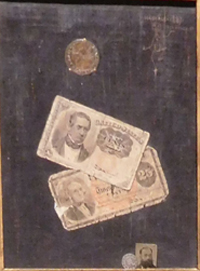 Painted by Haberle in 1887, “Small Change” is an oil on canvas still life depicting four pieces of money: the reverse of a well-worn 1787 Colonial piece, two pieces of Fractional Currency,
and the reverse of a silver three-cent piece. The top piece of currency is a 10 cent shinplaster with the head of William Meredith. Meredith was the Treasury secretary during the brief term of
Zachary Taylor (March 1849 to July 1860). The bottom bill is a 25-cent piece with George Washington’s head on it. Although the 10-cent bill is well worn, it is basically intact.
Painted by Haberle in 1887, “Small Change” is an oil on canvas still life depicting four pieces of money: the reverse of a well-worn 1787 Colonial piece, two pieces of Fractional Currency,
and the reverse of a silver three-cent piece. The top piece of currency is a 10 cent shinplaster with the head of William Meredith. Meredith was the Treasury secretary during the brief term of
Zachary Taylor (March 1849 to July 1860). The bottom bill is a 25-cent piece with George Washington’s head on it. Although the 10-cent bill is well worn, it is basically intact.
By contrast, the 25-cent note is worn out, with a missing segment extending into Washington’s portrait. This gap appears to be crudely filled with a postage stamp, the back of which is visible.
At the very bottom of the painting, ostensibly stuck into the frame, is the silver three-cent piece. It’s next to what appears to be a tiny photo of a bearded gentleman. According to the museum’s write-up for the painting, this “…is a self-portrait which Haberle likely included to defy these authorities [U.S. Secret Service] and express pride in his work. He also included humorous personal references such as the signature with stick figure that seems to be carved into the surface.” This is located in the upper right corner of the painting. Printing above and to the right of the stick figure reads, “J. Haberle 1887 New Haven CT.”
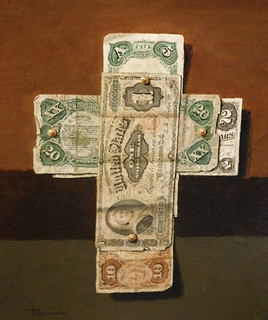 Painted in 1896, when the artist was 16, Dubreuil’s painting is titled “The Cross of Gold.” On it, what appear to be five well-worn pieces of paper money are arranged in the form of a
simple cross. The denominations are $1, $2, $5, $10, and $20. According to one write-up I found online, “Walmart cash has bought the painted cash you see here.” This refers, of course, to the
purchase of the painting for the Crystal Bridges collection.
Painted in 1896, when the artist was 16, Dubreuil’s painting is titled “The Cross of Gold.” On it, what appear to be five well-worn pieces of paper money are arranged in the form of a
simple cross. The denominations are $1, $2, $5, $10, and $20. According to one write-up I found online, “Walmart cash has bought the painted cash you see here.” This refers, of course, to the
purchase of the painting for the Crystal Bridges collection.
To read the complete article, see:
GO Trompe l’oeil art on display (www.numismaticnews.net/article/trompe-loeil-art-display)
THE BOOK BAZARRE
THE NUMISMATIC MUSEUMS OF BEIJING
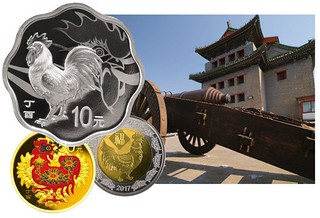 Beijing has two purely numismatic museums. The venues and their prestigious sponsors reflect the great significance attached to coins in Chinese culture.
Beijing has two purely numismatic museums. The venues and their prestigious sponsors reflect the great significance attached to coins in Chinese culture.
Silhouetted against the sky, one building stands out as our taxi slows to exit the freeway. I nod toward it and ask, “Is that where we are going?” “Yes,” my friend replies. The car turns, rolls across an overpass as ten lanes of Beijing vehicles rush by below, and drops us off along the edge of a busy traffic circle. On foot now, we gingerly thread our way toward the massive structure.
A high stone wall crowds the curb and leaves us little room to avoid the cars that zip by. Its sheer face of carefully fitted charcoal-gray blocks calls to mind Mordor. We make haste to the safety of a broad landing area. There a sign announces, “Panoramic View of Beijing Ancient Coins.” From here it is just a few more paces to the entrance. Inside, shielded from traffic noise, is a peaceful courtyard lined with Magnolia trees.
We are at the Deshengmen Gate. Once it was one of nine fortified entrances to the old city of Beijing. The nine gates were manned by crack troops, the toughest and best-trained in the emperor’s military. The gates controlled entry and egress to the capital city and were repeatedly the sites of pitched battles between Chinese defenders and Mongol bands from the north. Many gates are now completely gone, remembered only in the names of subway stations like Xuanwumen (pronounced Shwen-wu-men) and Fuchengmen.
Fittingly, there is a fascinating military museum on an upper floor of the Deshengmen Gate fortress. On a clear day, a climb to the topmost parapet rewards a visitor with an outstanding view of the city, as well as an appreciation for what a formidable post this was. A couple of antique cannons reinforce the impression. At ground level, though, the former garrison is now dedicated to coins, not warfare.
As the sign suggests most of the coins are ancient. Although, my interest is primarily modern Chinese coinage, the exhibits are excellently explained in English. They do a fine job of presenting the development of money in China and why numismatics is important to Chinese culture today. There is a good display of modern paper money, although the best collection in the world can be seen across town at the China Numismatic Museum.
Beijing has two purely numismatic museums. The Beijing Ancient Coins Museum at Deshengmen Gate is part of the Beijing Municipal Administration of Cultural Heritage. Across town the China Numismatic Museum operates under the auspices of The People’s Bank of China, the nation’s central bank. Additionally, the National Museum has a major permanent numismatic display and coins are often seen at other institutions like the Capital Museum.
To read the complete article, see:
Chinese Coins: Coins and Cannons (www.ngccoin.com/news/article/5827/Chinese-Lunar-coins/)
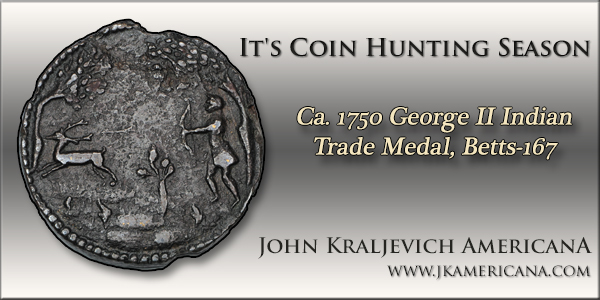
PRIMARY RESEARCH AND THE NETHERLANDS DUCAT
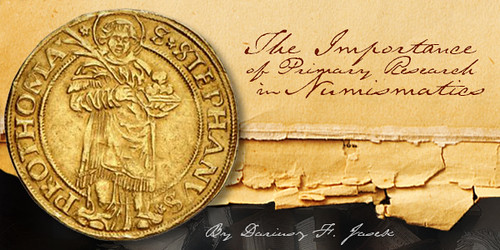
In the beginning of my research on gold ducats I looked for the existing literature on the subject. André Delmonte’s well-known book entitled Le Benelux D’Or and Albert Scheffers’ The Dutch Gold Ducat (1586-1986) were my first choices. Shortly afterwards I searched for more new and old books.
The more that I read, the more I noticed that there were inconsistencies and direct contradictions within the different books and it was rather obvious that somebody had to be wrong. Given that, I soon realized that doing my own primary research would be the only way I could find true answers to my questions.
Modern Books
Delmonte’s book had already been supplemented by the Dutch numismatists many times, in the form of articles published by some Dutch magazines. But I never found any corrections of the museum
attributions given by Delmonte. While doing my research, I made sure to verify every reference to every coin listed as being in a given coin collection. Thus, I found some that could not be verified,
e.g. some of the Gelderland ducats listed as being in the State Hermitage Museum Coin Cabinet, were not actually, and had never been, in the State Hermitage Coin Cabinet.
Delmonte also listed some fancy coin types, like the Nijmegen double ducat with St. Stephanus kneeling. This specific coin seems to have been completely misidentified and is instead a Nijmegen undated double ducat with St. Stephanus standing; because the only known specimen, which was supposed to be found in the Vienna Coin Cabinet, was in fact never there. The reference to the Vienna Collection was reported by Delmonte and then duplicated by other authors in their own works, but I received confirmation directly from the Kunsthistorisches Museum that this reference is incorrect.
The only publication specifically about The Netherlands gold ducats--a red booklet published in 1986 by Albert Scheffers on the 400th anniversary of introducing this coin type--is a very good book. In the listing of dates when gold ducats were minted, however, Scheffers made a number of mistakes.
Looking further for modern Dutch books on the provincial coinage I found two of the leading coin catalogs in The Netherlands today: “Catalogus van de Nederlandse munten” by Jan C. van der Wis and Tom Passon, and a two-volume set entitled “Handboek van de Nederlandse Provinciale Muntslag” by Dick Purmer. Both are very good books on the subject, and of equal importance.
But sometimes they contradict each other. For example, when it comes to the Gelderland 1715 double ducat, according to one author (Purmer) it was supposed to have been minted with a mintmaster’s privy mark (a crane). Yet according to the other authors (Passon & van der Wis) it was minted without this privy mark.
Therefore, I contacted the Norwegian Museum in Oslo, where the only known example of this date can be found. Looking at the coin was the only way to judge which book description was correct.
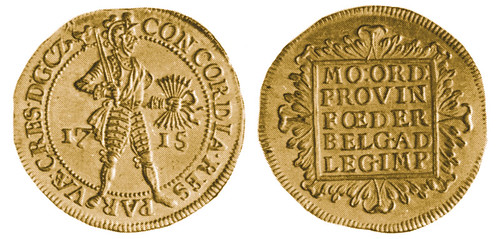
The Gelderland 1715 double ducat
To read the complete article, see:
World Coins – A History of the Netherlands Gold Ducat, Part 3:
The Importance of Primary Research in Numismatics (www.coinweek.com/world-coins/world-coins-history-netherlands-gold-ducat-part-3-importance-primary-research-numismatics/)

MARKETING THE NEW ONE POUND COIN
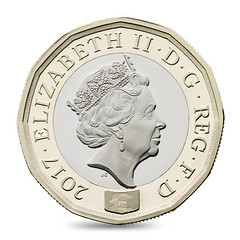
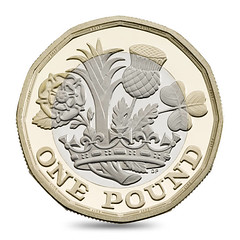
David Pickup writes:
We are looking forward to seeing the new pound coins which are very well designed. Newspapers carried an advertisement yesterday inviting people to buy the new coins in advance for £10.00 each. They are made to Brilliant Uncirculated standard but surely all coins are that condition when they are made! Why would you pay £10.00 for something you can get for a pound in a few weeks ?
Well, some people are early adopters, and want to be the first in their circle to have the latest and greatest thing. Others are easily suckered into thinking they're getting a great deal. There is no end to the marketing angles salespeople can come up with, and apparently no end to the line of people who succumb to them. As the old saying goes, "There's a sucker born every minute."
In fairness to the sellers though, there is a great deal of overhead cost involved in accepting and shipping orders for single coins - advertising costs, web site creation and maintenance, handling payments, packaging, shipping, etc. Profit margins are lower than they may seem. Below is the link to where the coin can be ordered from the Royal Mint. -Editor
For more information, or to order, see:
Nations of the Crown 2017 UK £1 Brilliant Uncirculated Coin (www.royalmint.com/shop/u/uk17d1bu) 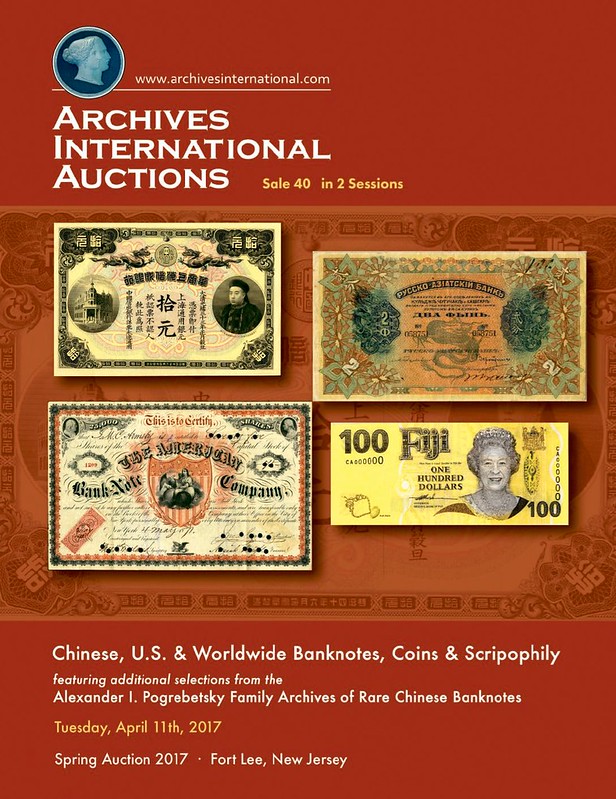
TOWER MINT STRIKES NEW ISLE OF MAN COIN
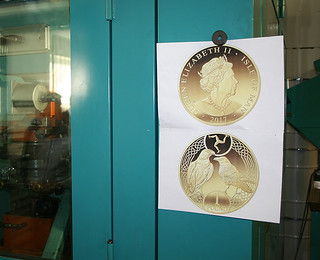 It was a day of all change on Thursday the 9th March when representatives of the Treasury of the Isle of Man attended the first-strike ceremony and inauguration of the new series of
circulation coinage for the self-governing Crown dependency. From the 1st April, the Tower Mint, United Kingdom, become the island’s official minter, having won a bid tendered out last year. The
change of minters has been described as a new phase of coinage for the Isle of Man, one that will usher in a new era of dynamic and bold designs as well as a new circulation £5 coin.
It was a day of all change on Thursday the 9th March when representatives of the Treasury of the Isle of Man attended the first-strike ceremony and inauguration of the new series of
circulation coinage for the self-governing Crown dependency. From the 1st April, the Tower Mint, United Kingdom, become the island’s official minter, having won a bid tendered out last year. The
change of minters has been described as a new phase of coinage for the Isle of Man, one that will usher in a new era of dynamic and bold designs as well as a new circulation £5 coin.
The day was hosted by the owner of the Tower Mint, the world-renowned sculptor and artist Raphael Maklouf, who introduced his team and greeted assembled mint guests. Among them were representatives from blank suppliers, distributors, marketing, and numismatic editors and publishers. Mr. Maklouf introduced Ms. Paula Primrose, the Isle of Man’s chief accountant, as well Mr. Colin Campbell, the Isle of Man’s investment and banking manager, whose job it would be to strike the new coins. Being struck today was a new commemorative coin celebrating 150 years of the first general election of the House of Keys—the directly elected lower branch of Tynwald, which took place in April 1867.
Mr. Maklouf commented further that today was a very special day not only for the Tower Mint but for the Isle of Man, who would be inaugurating a new effigy of HM Queen Elizabeth II on their 2017-dated coinage. The new portrait is the work of Jody Clark, product designer and engraver at the Royal Mint. The portrait was created at the same time as the definitive, fifth portrait that has been in use on all British circulation coins since March 2015.
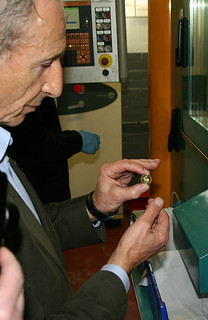
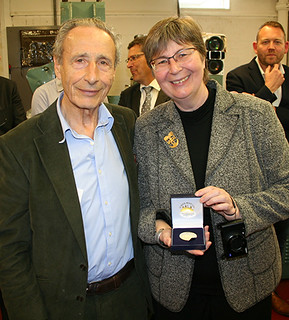
Left: Raphael Maklouf inspects the newly minted £1 coins
Right: Raphael Maklouf and CoinsWeekly Editor Ursula Kampmann
To read the complete article, see:
Isle of Man and the Tower Mint: First-strike ceremony for a new coin
and a new relationship (http://news.coinupdate.com/isle-of-man-and-the-tower-mint-first-strike-ceremony-for-a-new-coin-and-a-new-relationship/)

THAMES VICTORIA CROSS MEDAL INVESTIGATIONS
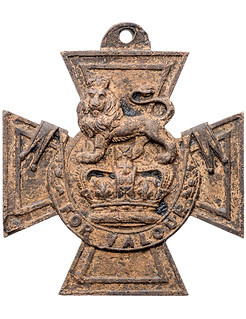 A MEDAL was found amid the mud of the Thames just before Christmas 2015, and it could well be the first Victoria Cross to be awarded to a member of the Durham Light Infantry.
A MEDAL was found amid the mud of the Thames just before Christmas 2015, and it could well be the first Victoria Cross to be awarded to a member of the Durham Light Infantry.
And among the debris, detectorist Tobias Neto found a VC inscribed on the rear with the date, November 5, 1854 – which was the day Pte John Byrne rescued a fallen colleague from in front of Russian guns at the Battle of Inkerman.
The medals themselves were cast from the bronze of two cascabels – or cannons – captured from the Russians at Sebastopol and melted down. Even today, VCs are made from the same metal from the cannons and by the same company, Hancocks, which was Queen Victoria’s favourite jewellers.
When the Museum of London received the found medal, its first task was to ensure that it was not a forgery. It did this by comparing the composition of its metal to that of the bronze from the captured cannons (the captured cannons, incidentally, may have originated in China, so the composition of their metal is highly distinctive).
“We can’t yet say 100 per cent,” says Kate. “There’s room for error but it probably is a genuine VC.” The results of X-ray Fluorescence tests on the metal are due soon which, hopefully, will increase the certainty.
... two are missing. John Byrne’s is one of them; the other belongs to Pte John McDermond, of the 47th Regiment of Foot, who rescued a colonel at Inkerman.
Therefore, it looks like there is a 50-50 chance that the found medal belongs to Byrne. But how could it have ended up in the Thames?
“I have been trying to place one of those two men in London and I haven’t really come up with a satisfactory explanation,” says Kate.
“I have made contact with a researcher in County Cork who is looking into Byrne and there’s a family history that he got into a fight in a pub in London and allegedly struck a man. The man fell back, struck his head and subsequently died, and in remorse Byrne threw his medal into the river. How much can that story be trusted?”
Is it just spooky coincidence that the family story – perhaps set in Byrne’s hazy days when he might have been in London – foresaw the discovery of a medal in the Thames, or was that one newspaper right that Byrne had the medal with him at his death?
“And then there’s a third option,” says Kate, suddenly. “After the medal featured in our exhibition, someone got in touch with me to tell me about Anthony Palmer, a private in the Grenadier Guards, who had his medal stolen in a bar brawl in London and requested a replacement from Queen Victoria, which she granted.”
Palmer, whose VC is in the Guards museum, won his medal at Inkerman for bravely attacking a sandbag battery and saving a major. Could the one in the mud be connected to him, or could it belong to our man Byrne?
“It may be that we never know,” says Kate. “It is a mystery, and it may remain the mysterious VC.”
To read the complete article, see:
Speculating the provenance of mysterious
Victoria Cross medal salvaged from the River Thames (www.thenorthernecho.co.uk/history/15157927.Speculating_
the_provenance_of_mysterious_Victoria_Cross_medal_salvaged
_from_the_River_Thames/)
To read earlier E-Sylum articles, see:
VICTORIA CROSS MEDAL FOUND IN THAMES RIVER (www.coinbooks.org/esylum_v19n47a17.html)
DESCENDANTS OF THAMES VICTORIA CROSS MEDAL SOUGHT (www.coinbooks.org/v20/esylum_v20n01a33.html) 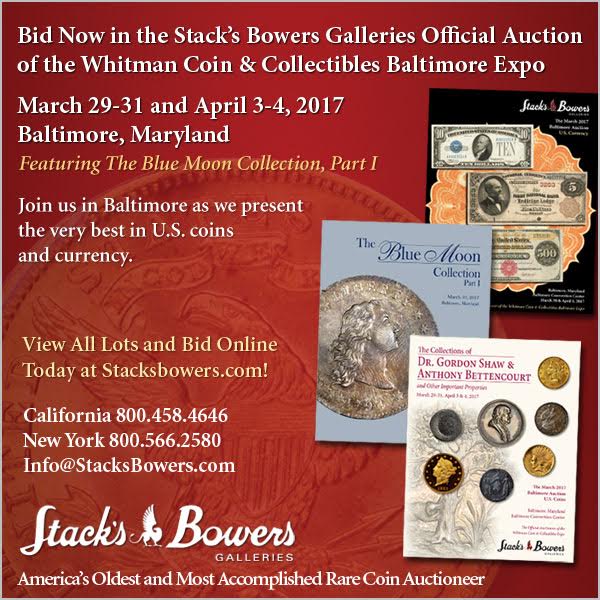
RESEARCHERS INVESTIGATING WAR GOLD SHIPS
After 25 years of research, a group of marine experts has produced a comprehensive and closely-guarded database of secret gold movements from Britain to the U.S. and elsewhere in World Wars I and II.
The gold was being sent by both the government and private institutions to pay their wartime bills. But a substantial amount ended up on the seabed, courtesy of the German U-boats which made every trans-Atlantic voyage a game of Russian roulette.
Now some of it may be heading for the surface as the most ambitious treasure hunt of modern times gets underway. For, after painstakingly cross-referring classified Bank of England and government records with new archive material in Britain and overseas, the researchers believe they have pinpointed a series of Atlantic wrecks containing gold with a combined value of at least £4.5 billion. That is just a conservative estimate.
The research also revealed that many of these ships were attacked precisely because of their precious cargo. The enemy had worked out ways to identify which vessels might be carrying gold, and U-boat commanders were told to make them priority targets.
Not only would sinking them reduce Britain’s ability to buy munitions and food but the plan was to return and salvage the gold after winning the war.
For there is now strong evidence that, sealed inside her at the bottom of the sea, lies a cargo of gold.
Armed with this fresh data, a pioneering £15 million recovery operation is due to get under way in a few weeks a few hundred miles west of Ireland.
Using precision robotics rather than human divers, the salvage team will target a ‘cluster’ of three ships in one area, two from World War I and one from World War II, and cut into them. All lie in international waters. A second ‘cluster’ has been earmarked elsewhere.
If the first three wrecks yield just half of what they are believed to contain, the result should be a jackpot for the investors, as well as for the taxman and for charities, too. Between them, they contain an estimated £750 million in gold. And once the amount of recovered gold hits a certain level, a percentage of profits will go to maritime causes.
To read the complete article, see:
How a crack team of marine experts spent 20 years breaking secret wartime codes and scouring
archives to finally trace the £4.5BILLION of British gold sunk by the Nazis (www.dailymail.co.uk/news/article-4325822/The-4-5BILLION-British-gold-sunk-Nazis.html)

SPECIAL FIVE POUND NOTES DEMAND EXAMINED
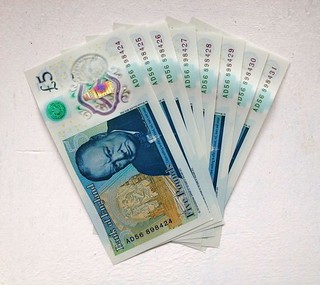 A new polymer £5 banknote fetching an eye-watering £50,000 on eBay is just one of a number of plastic fivers going for big money.
A new polymer £5 banknote fetching an eye-watering £50,000 on eBay is just one of a number of plastic fivers going for big money.
The note which sold has the serial number AK47 489327 and the sale follows thousands of instances of sellers auctioning off have the new five pound notes on eBay.
Collectors are looking for five pound notes with the lowest serial numbers as these attract the highest bids.
The first five pound note to be printed by the Bank of England, which has a serial number with AA01 000001, was given to the Queen but there are 999,999 other new fivers with the AA01 prefix.
A search on eBay currently reveals Brummie users are trying their luck and selling the note for as high as £20,000 - but it remains to be seen whether anybody bites.
The note from the seller, with a serial number ALI666, is described as "extremely rare" and is currently being viewed by multiple eBay users per hour.
Last week, a representative at a Birmingham auctioning company Joseph Cottrial told us many of these eBay sellers are not likely to make the profit they are hoping for.
Mr Cottrial, who works for Warwick & Warwick Ltd, said: “The one going for £50,000 is worth a fiver.
“The only one that stands a chance is the fiver that was given to the Queen.
“People can put anything on eBay but I suspect the users are trying their luck and being speculative...these prices are just too high.
“I even think in the future we’ll see a massive drop in the value.
“In 2017, I reckon, the most you can sell these fivers would be £100. Now, I would say you should sell for about £200.”
To read the complete article, see:
New £5 notes are being sold on eBay - and some plastic fivers have been fetching THOUSANDS
(www.birminghammail.co.uk/news/uk-news/sell-new-5-fiver-note-11977570)
To read the earlier E-Sylum article, see:
DEMAND CONTINUES FOR SPECIAL FIVE POUND NOTES (www.coinbooks.org/v20/esylum_v20n11a26.html)

FEATURED WEB SITE: FLORIDA CURRENCY
This week's Featured Web Site is the Hometown Currency Virtual Museum, a site on the History of Florida Currency. It is suggested by John and Nancy Wilson. who write:If you collect National Bank notes, especially Florida this would be a great site for you to learn all about the banknote history of Florida. At the recently completed American Numismatic Association National Money Show in Orlando the ANA Museum Showcase featured the Bill Youngerman, Inc. collection of the 59 towns that issued Florida National Bank Notes. A breathtaking exhibit that everyone who attended, and came back to the showcase, was able to see and enjoy. Frames were also displayed with information on Florida National Bank Notes. Mr Youngerman also prepared a 32 page booklet titled Collecting Florida National Bank Notes.
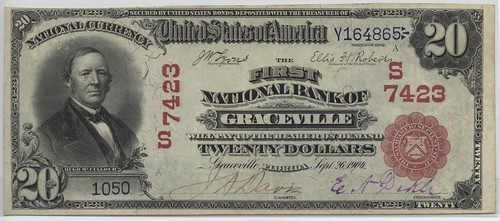
www.hometowncurrency.org

